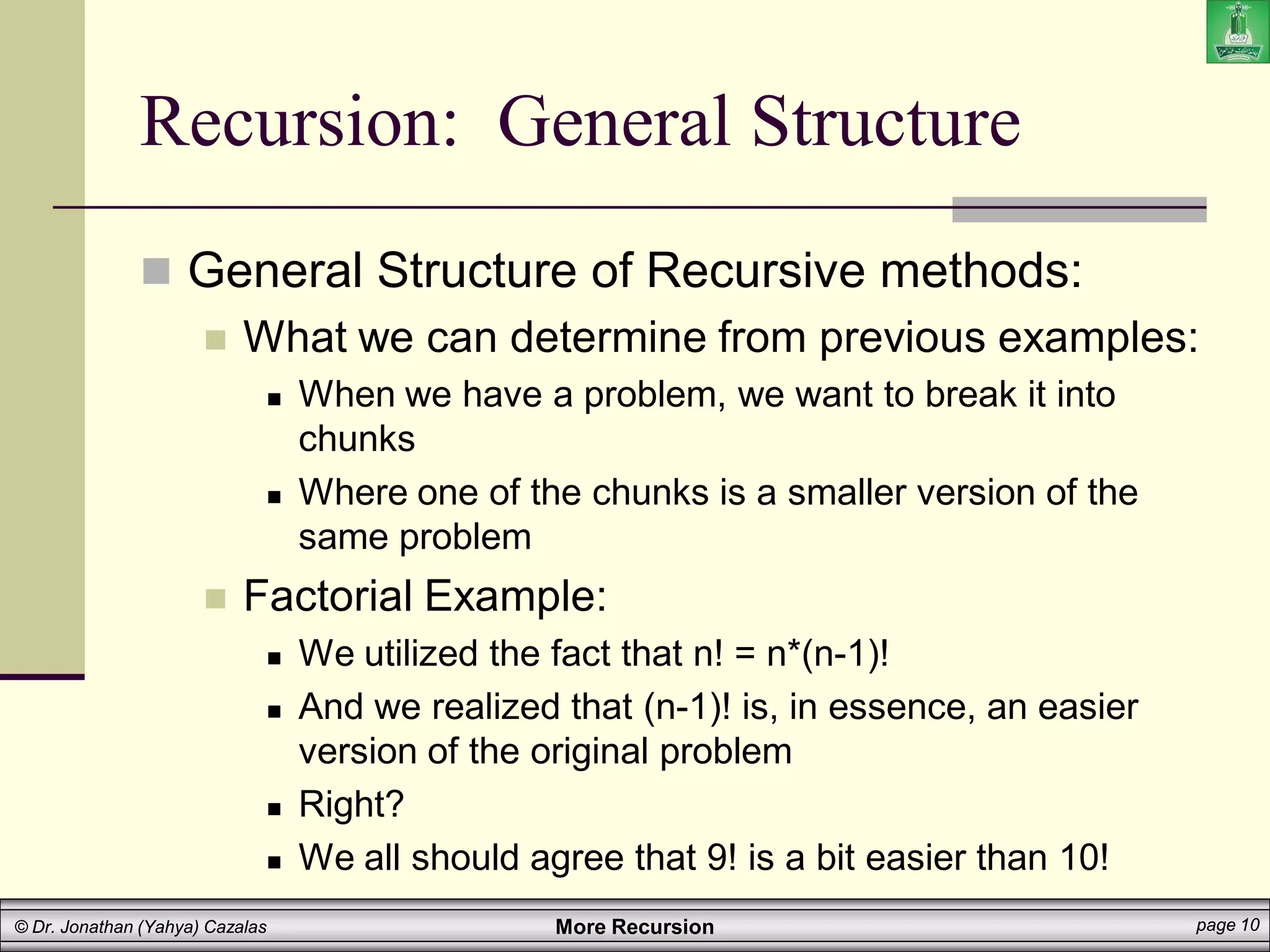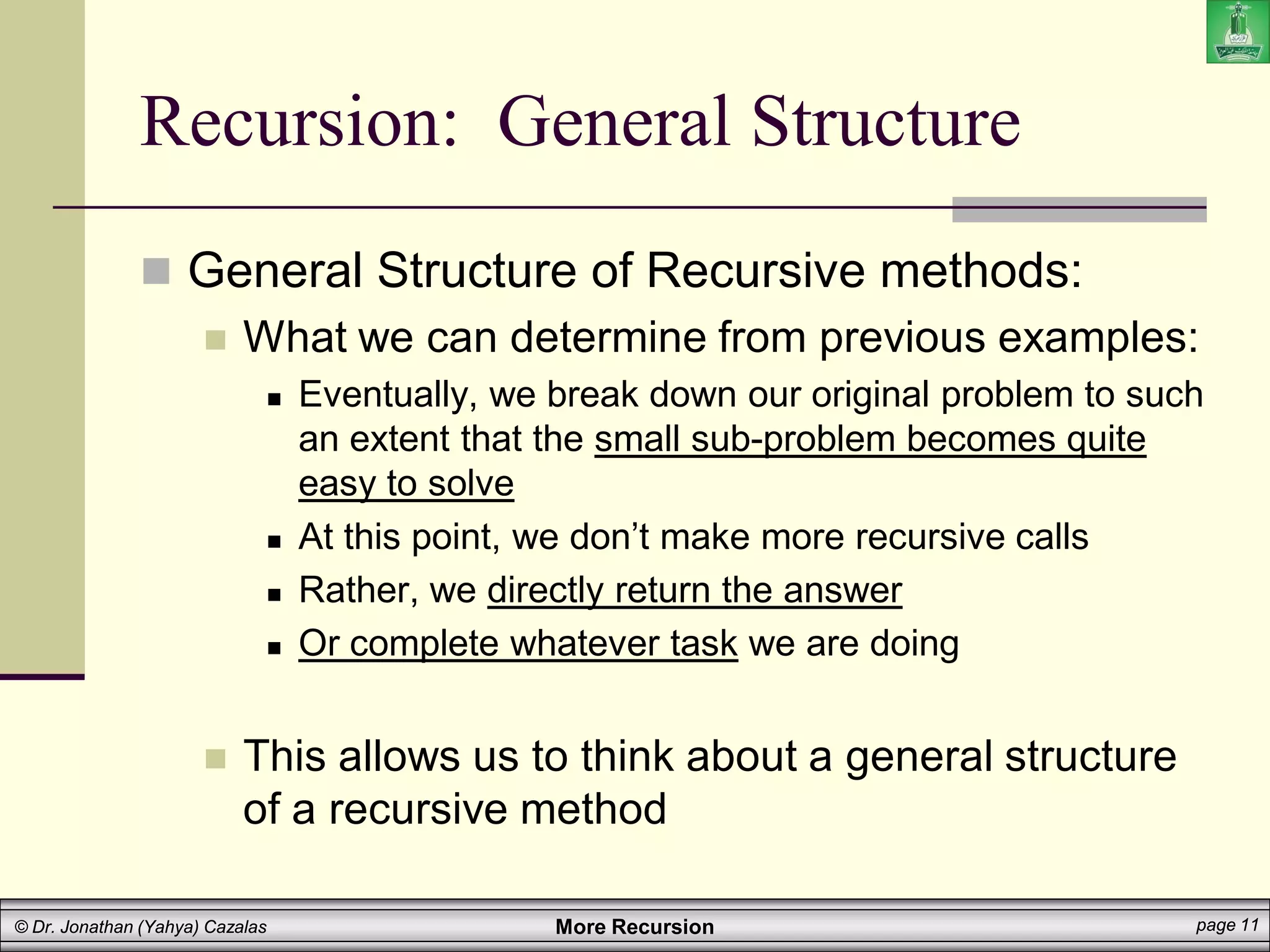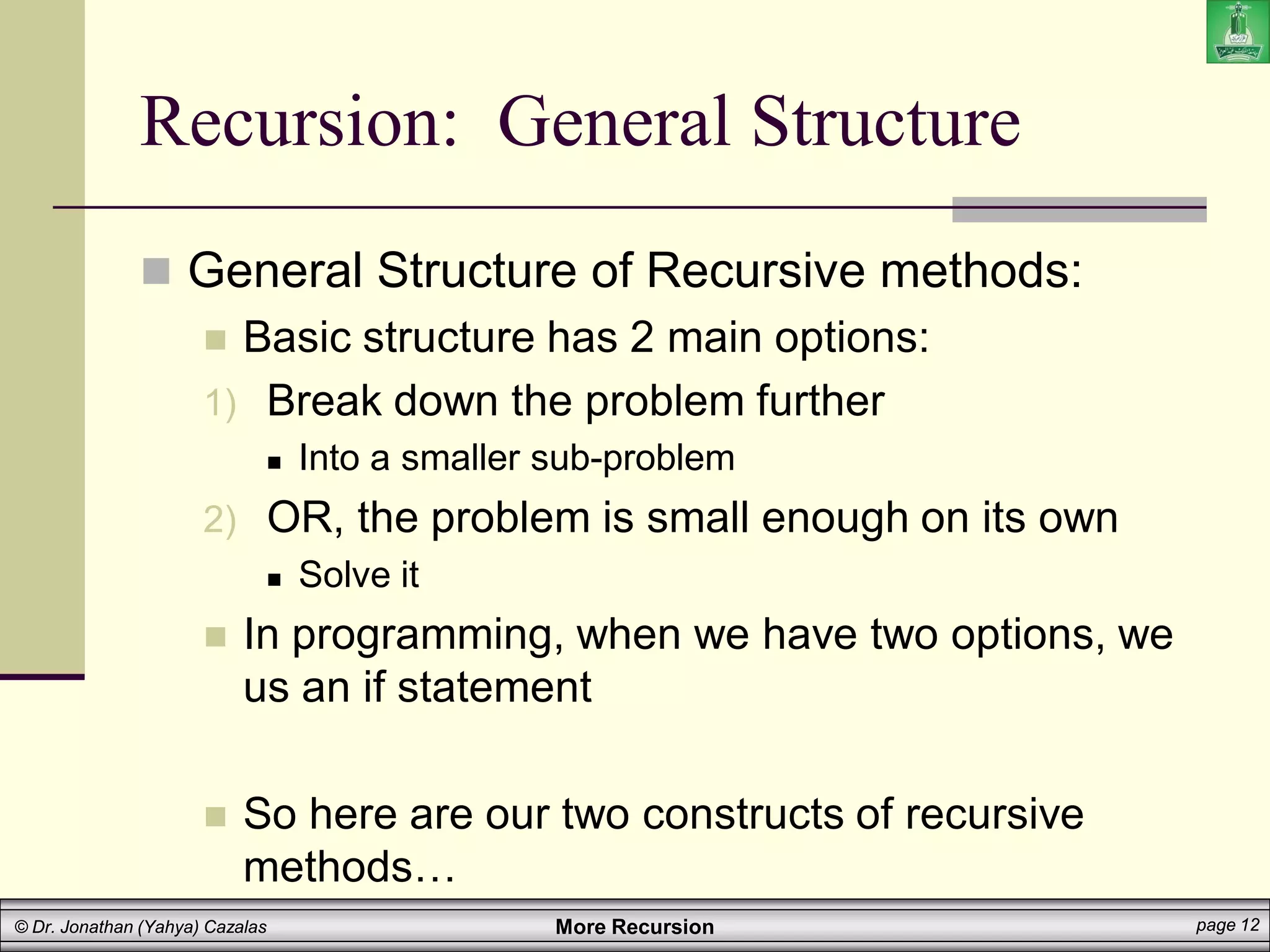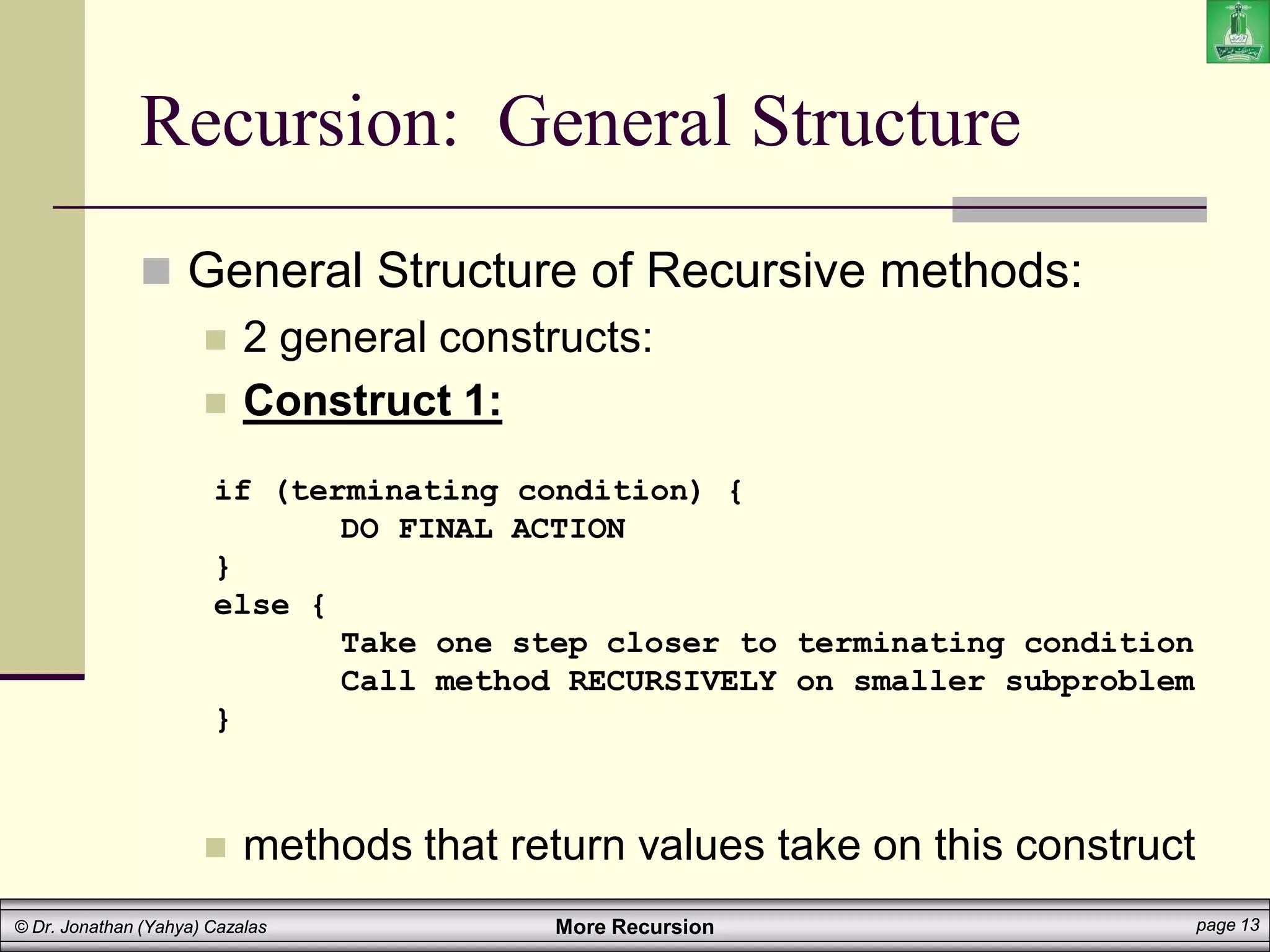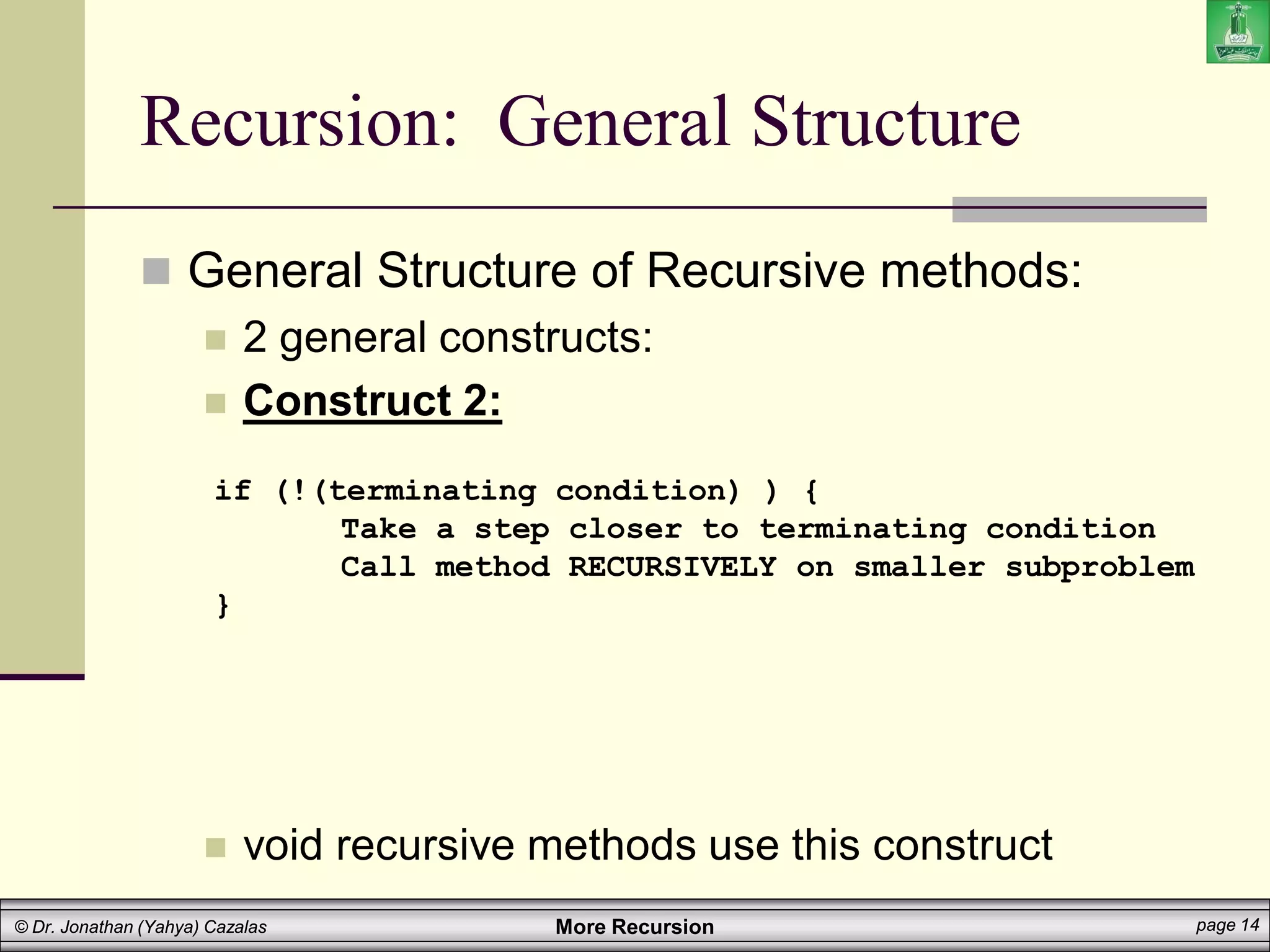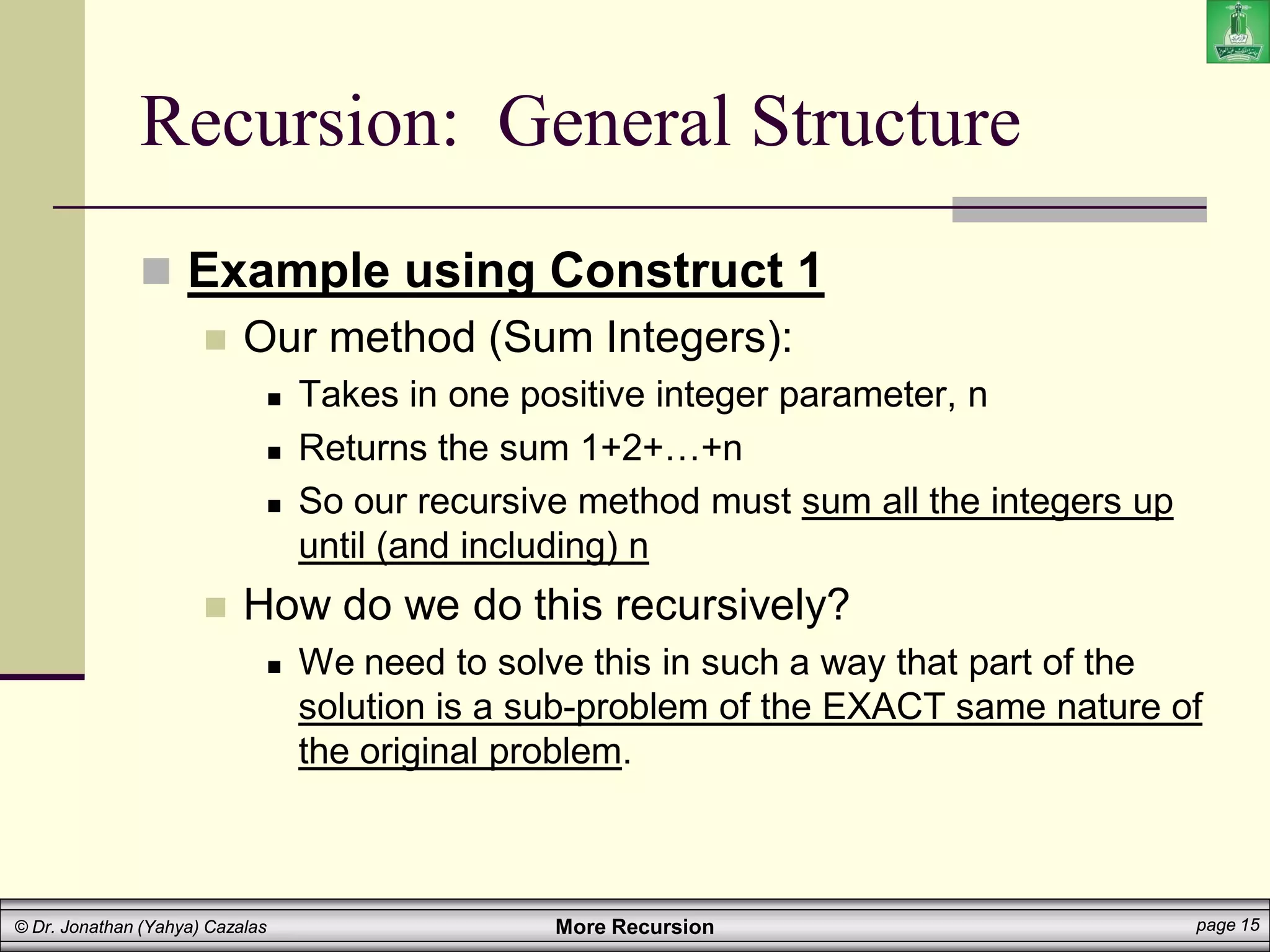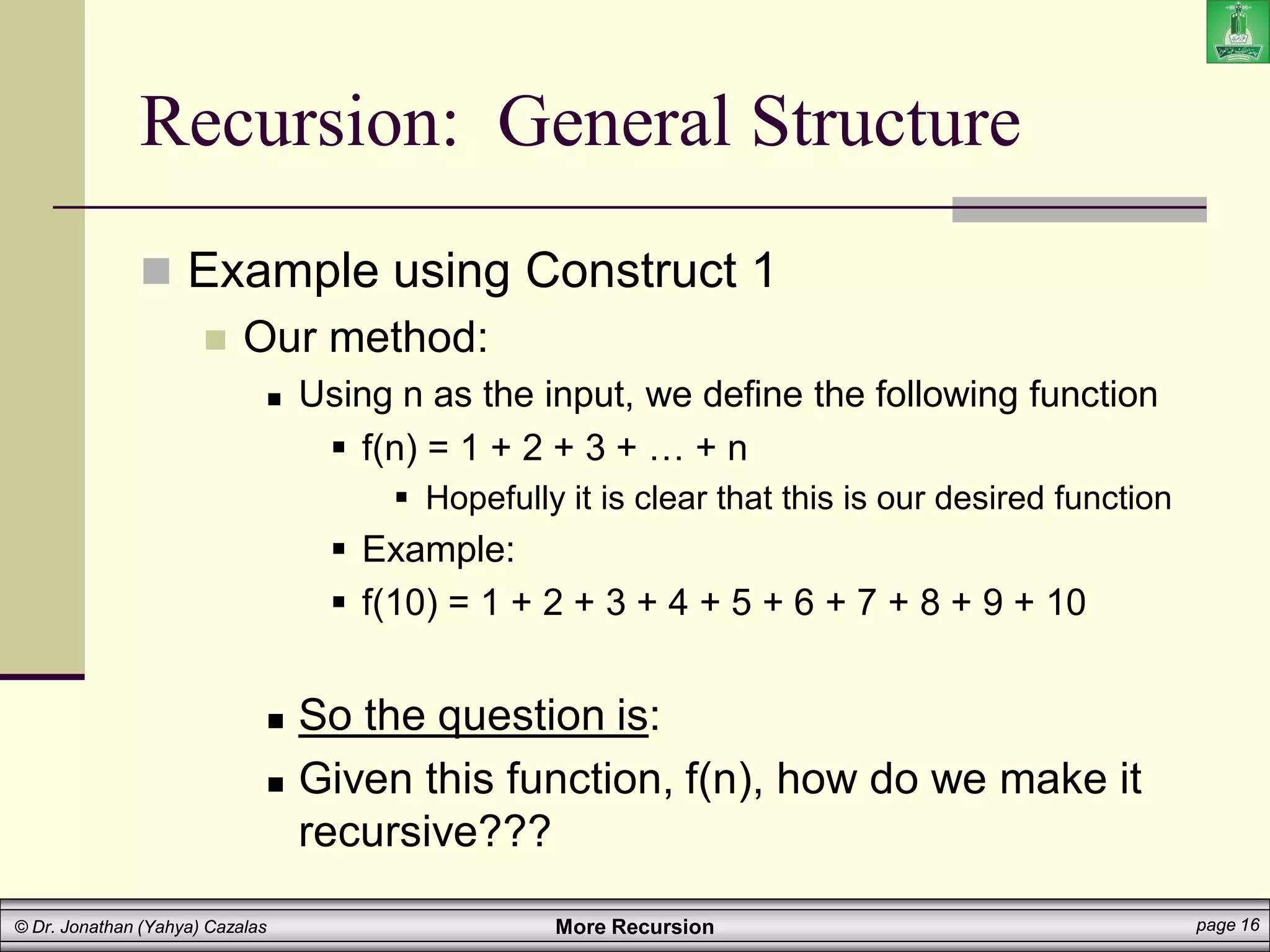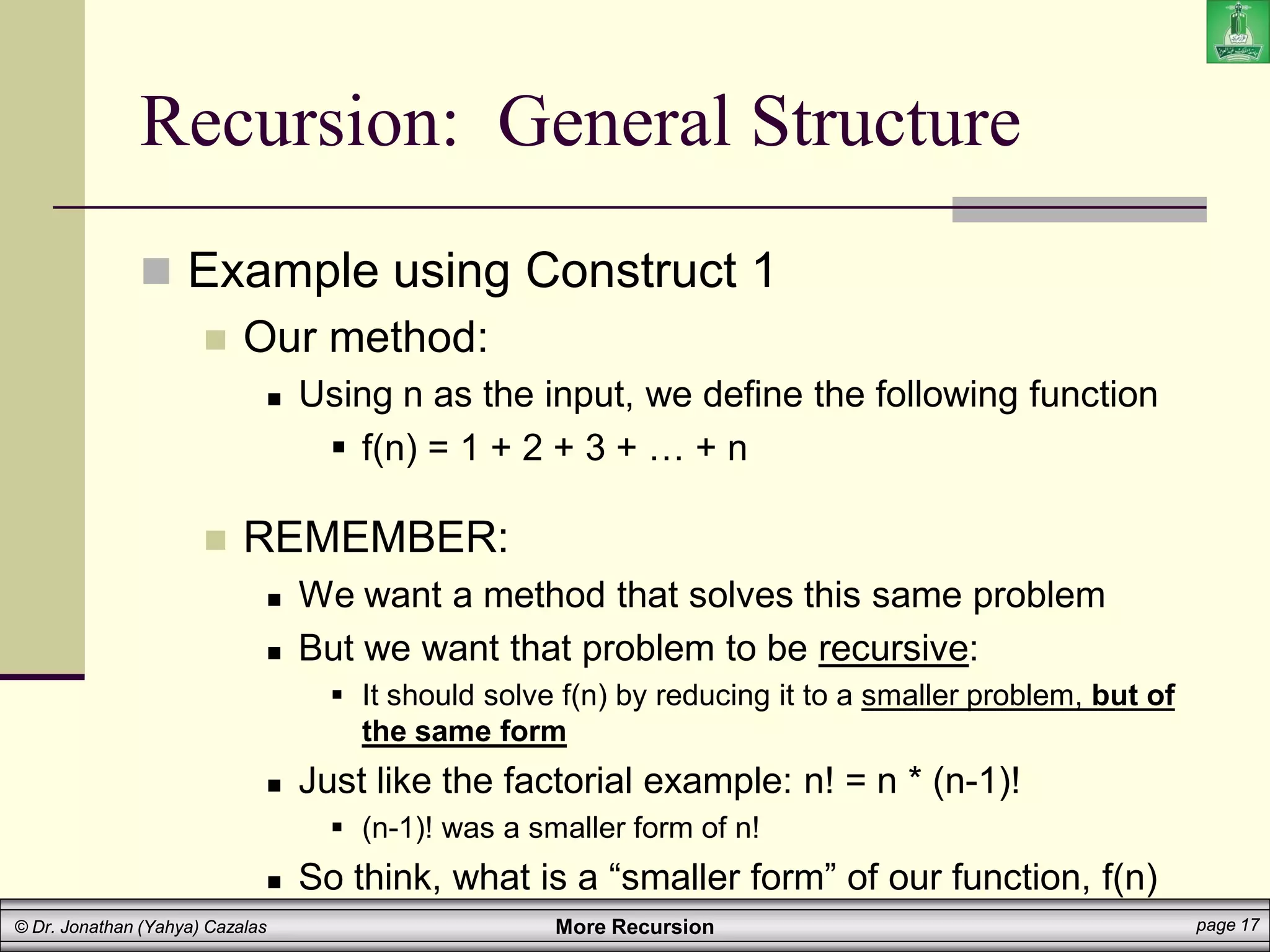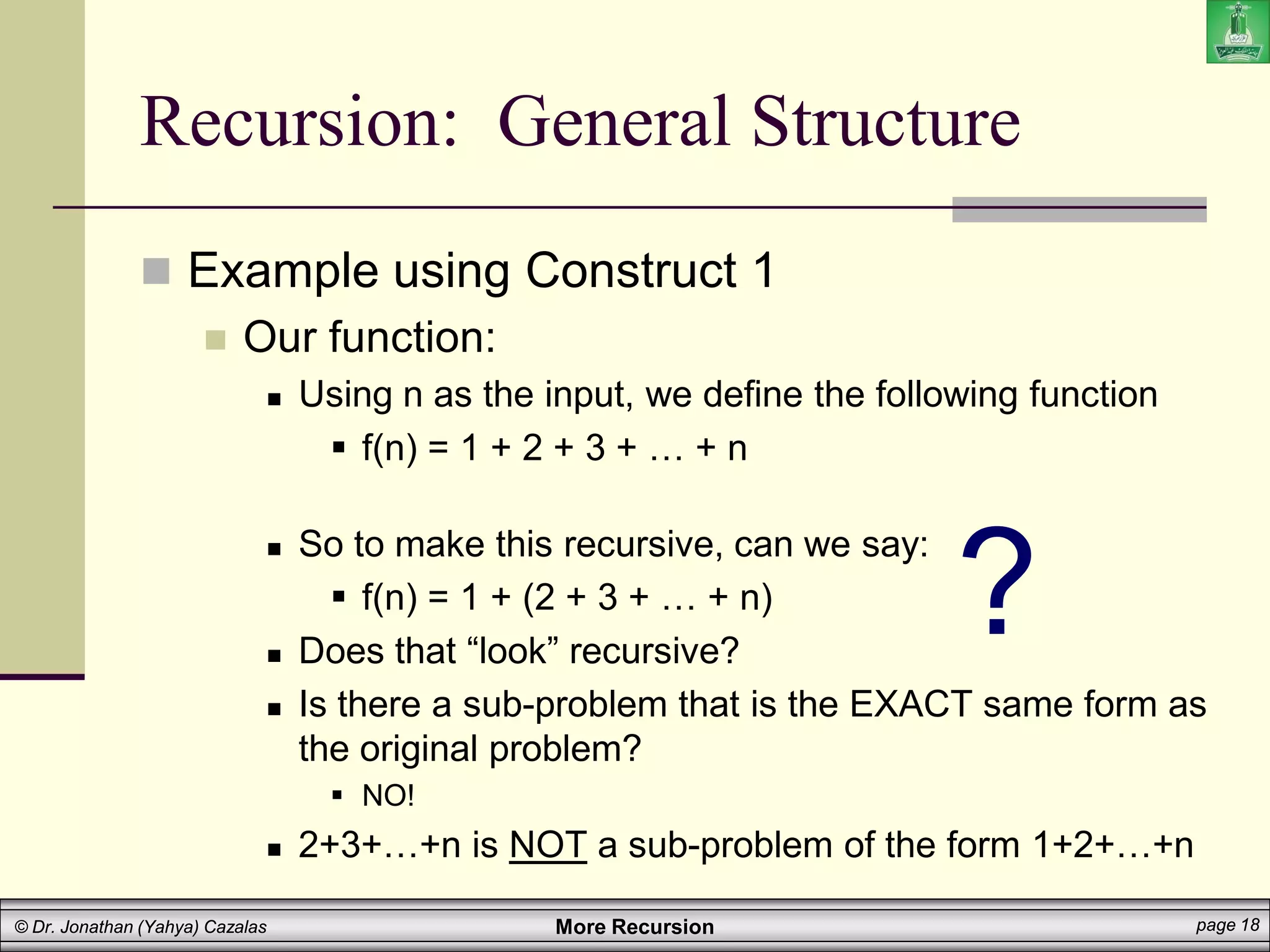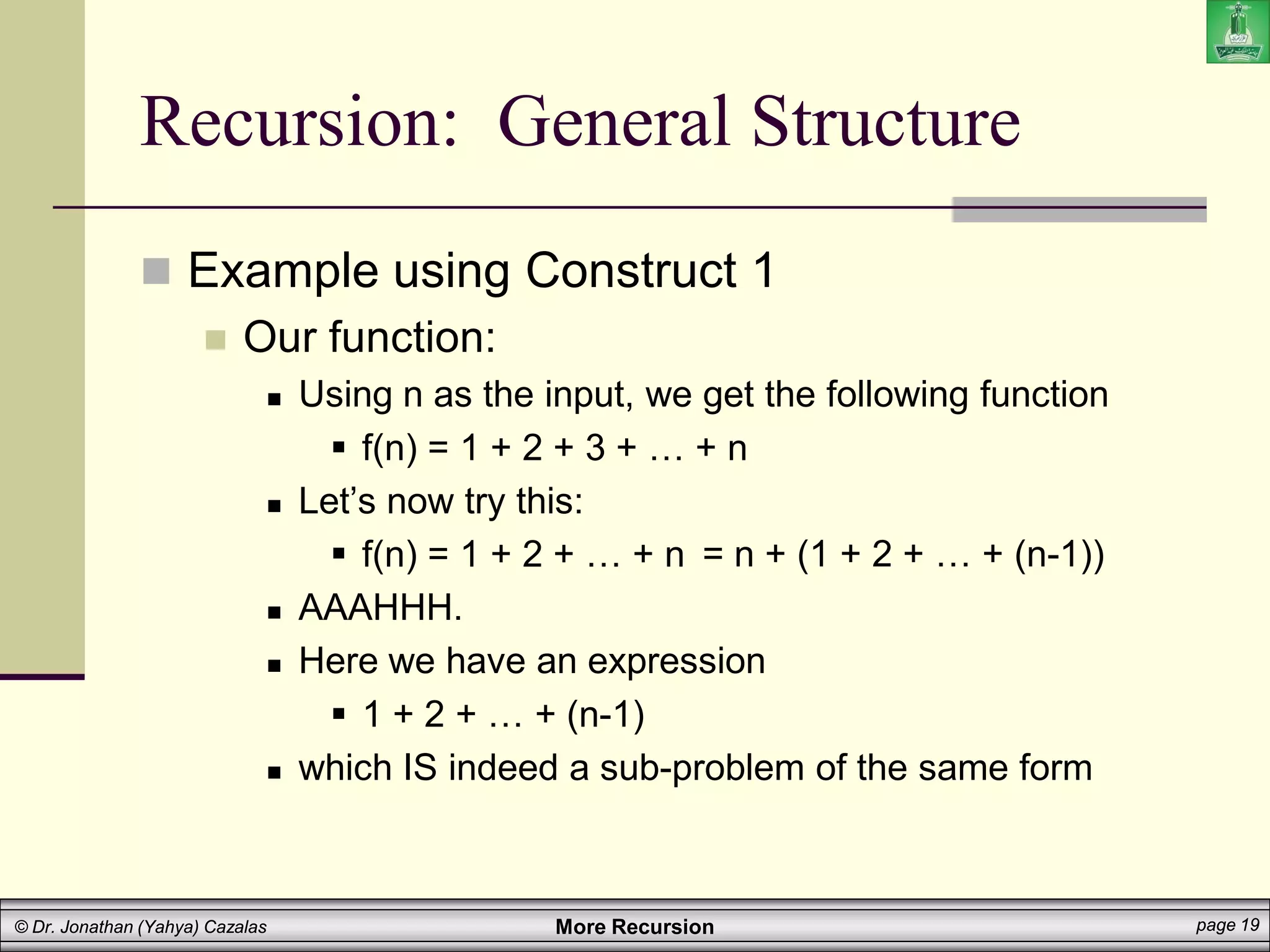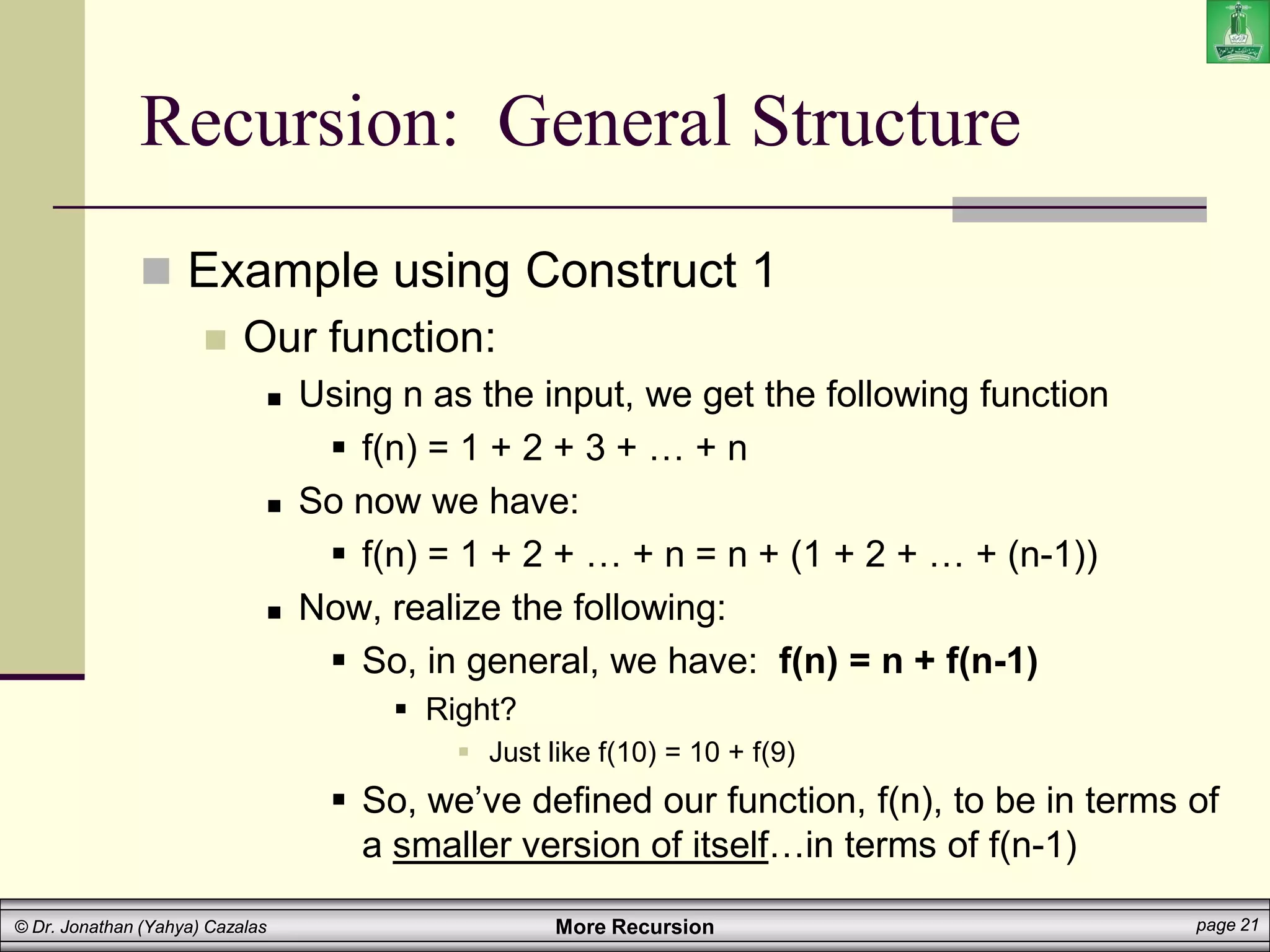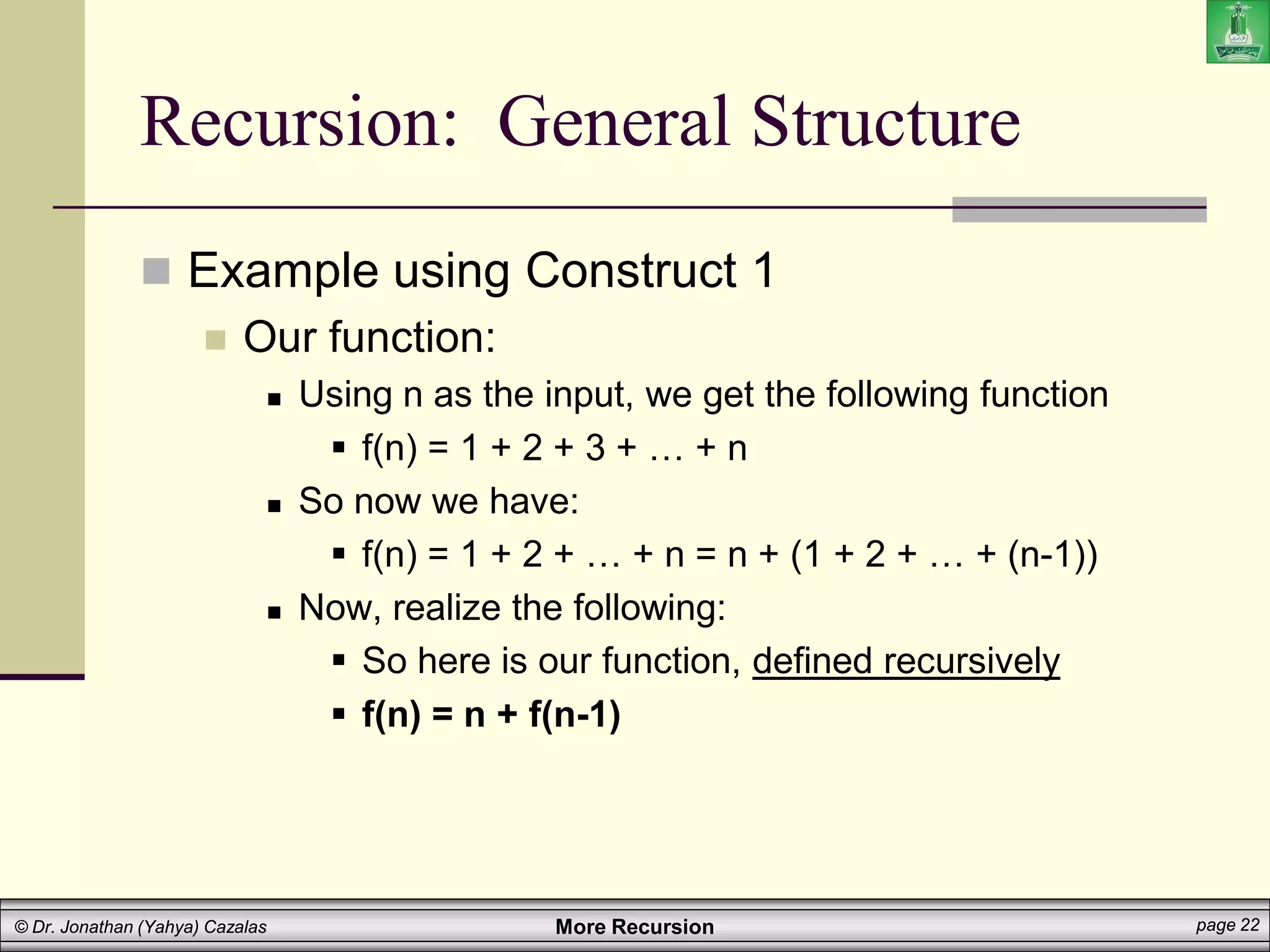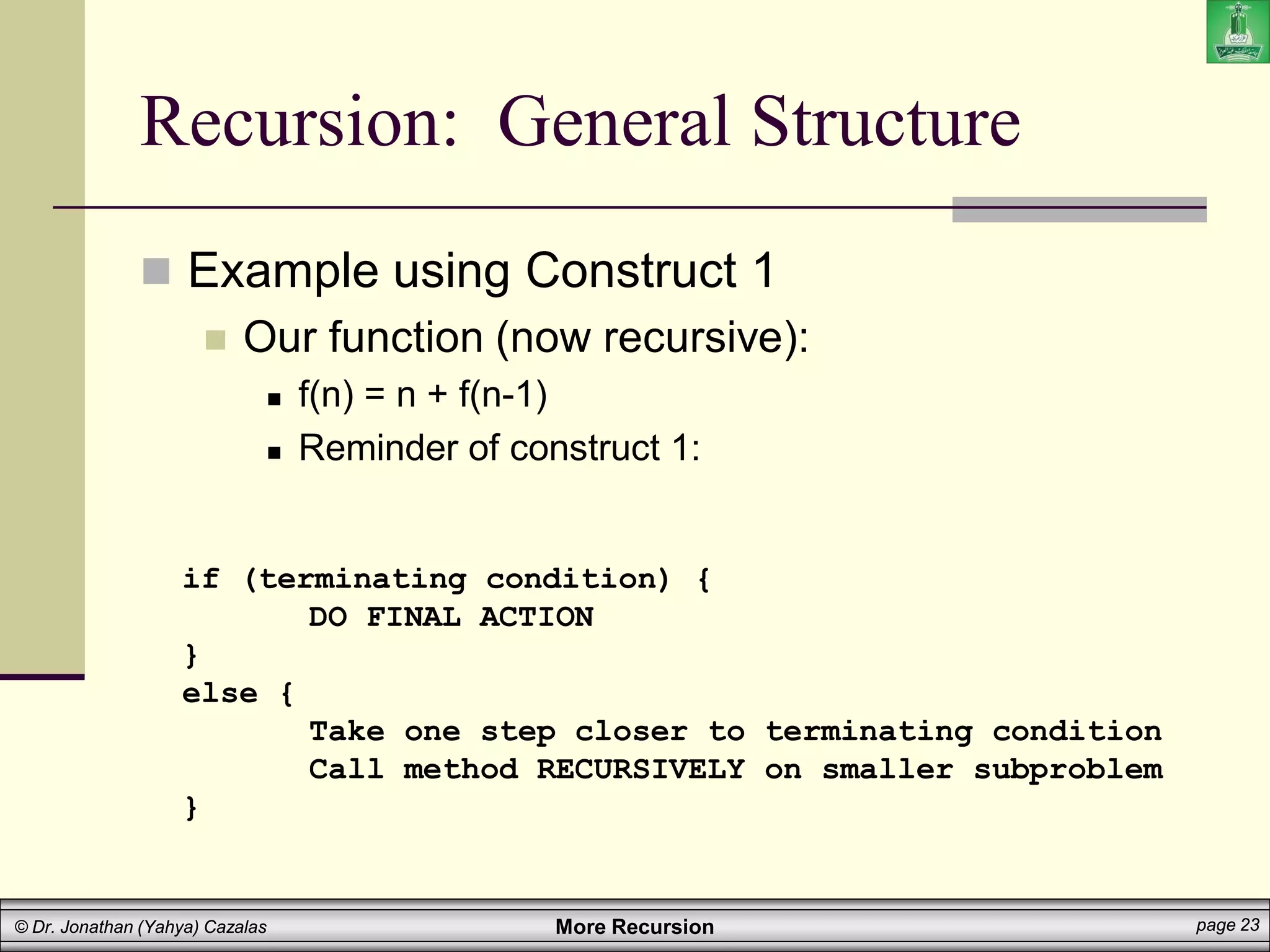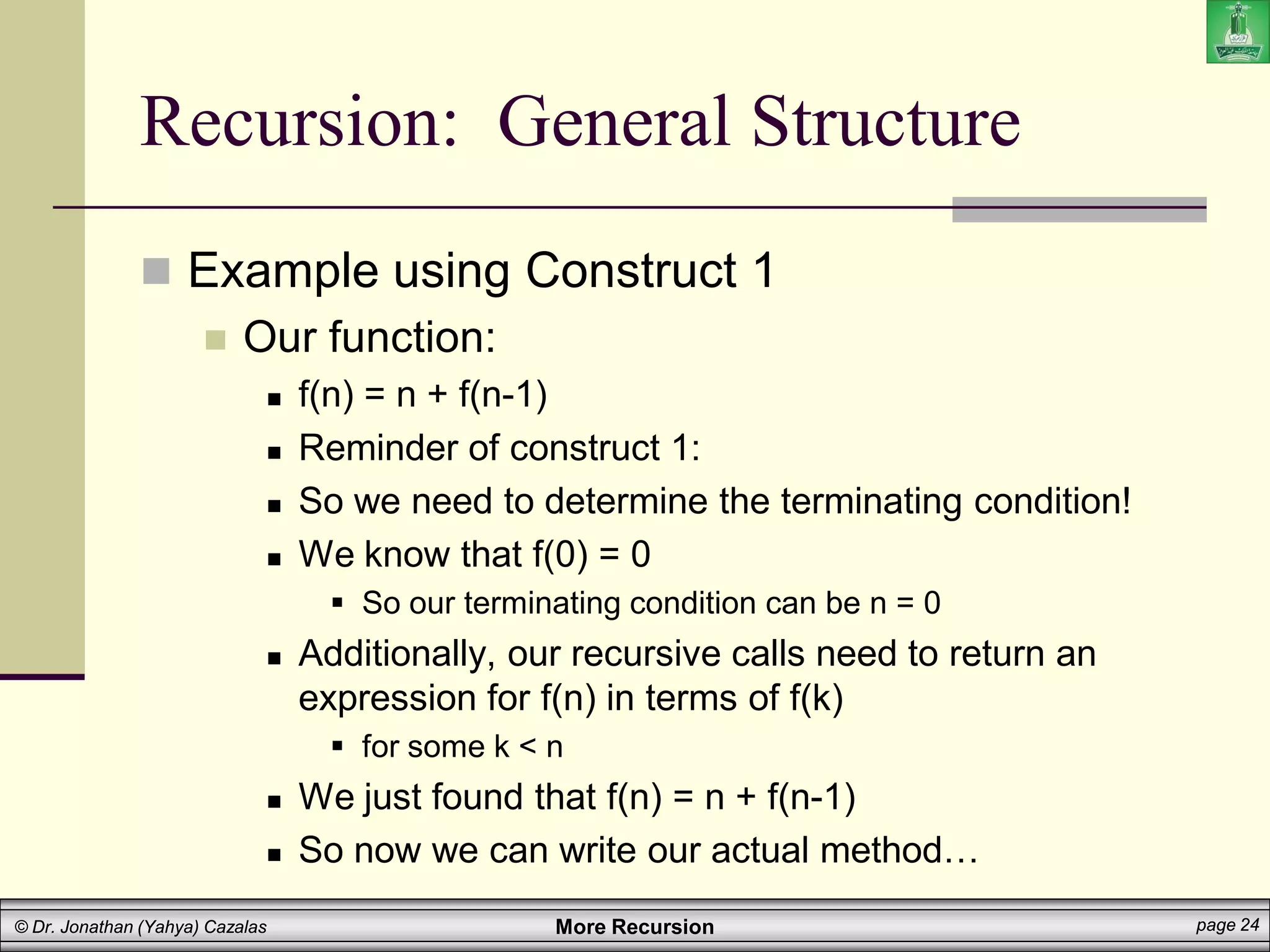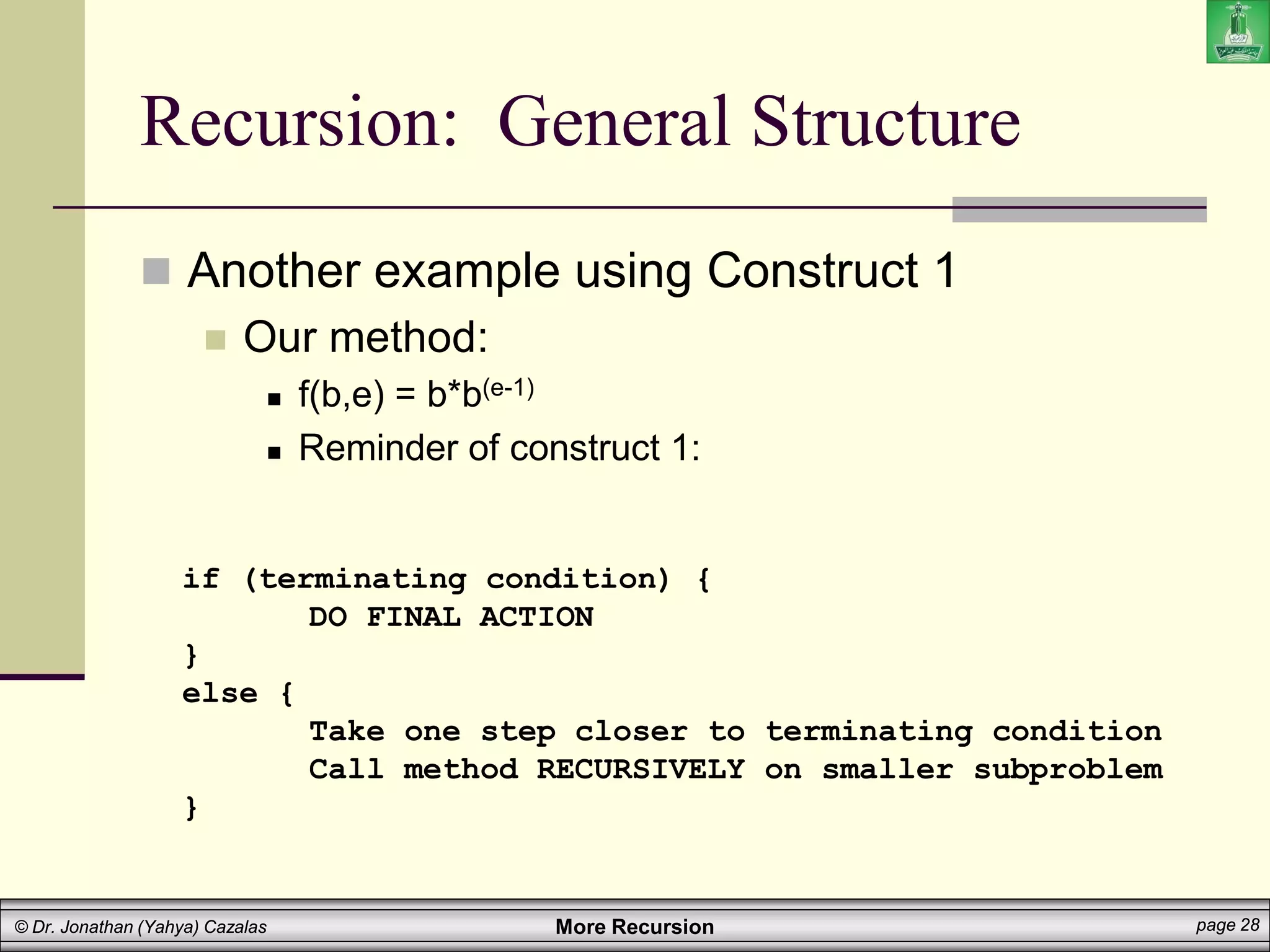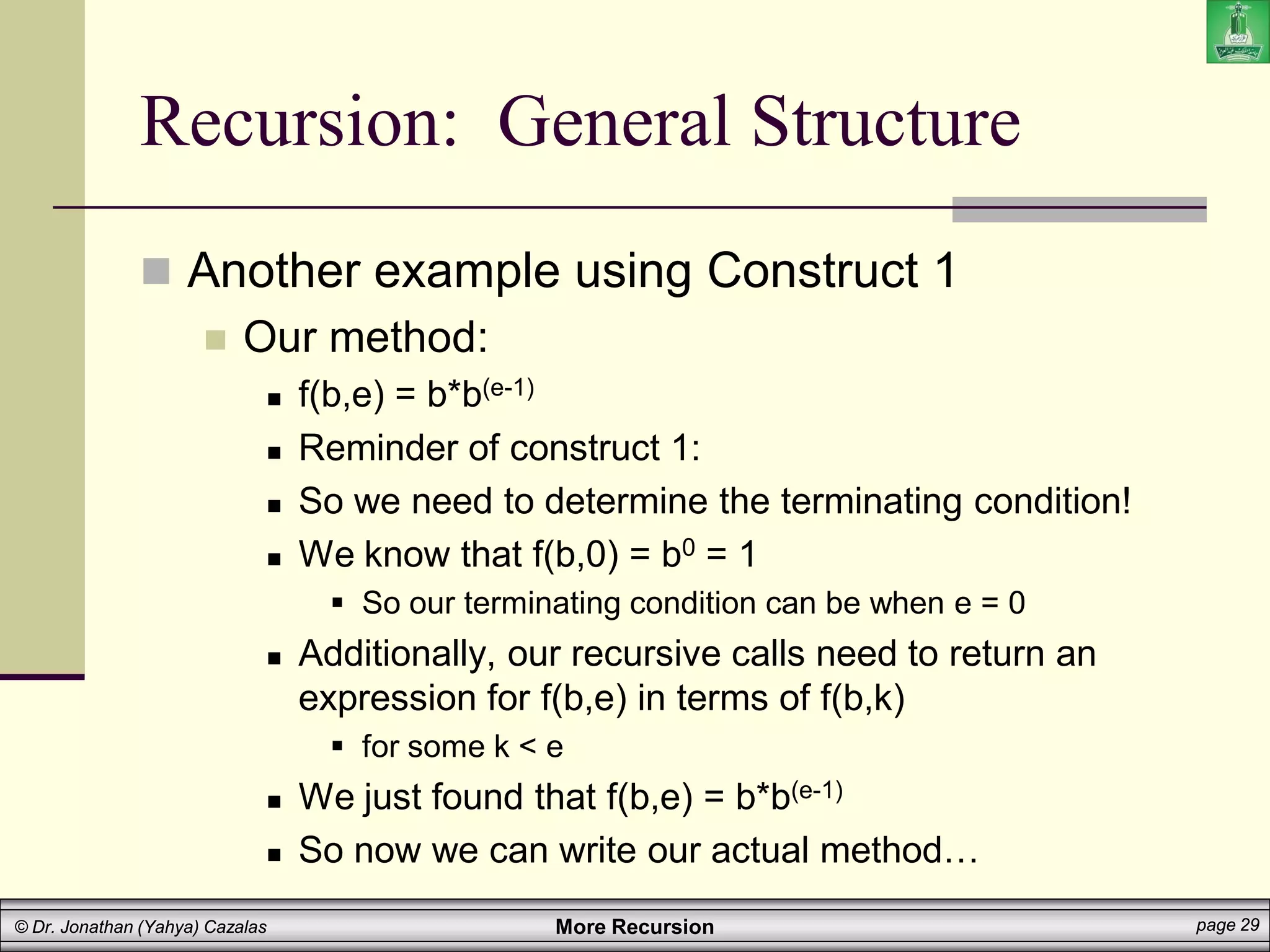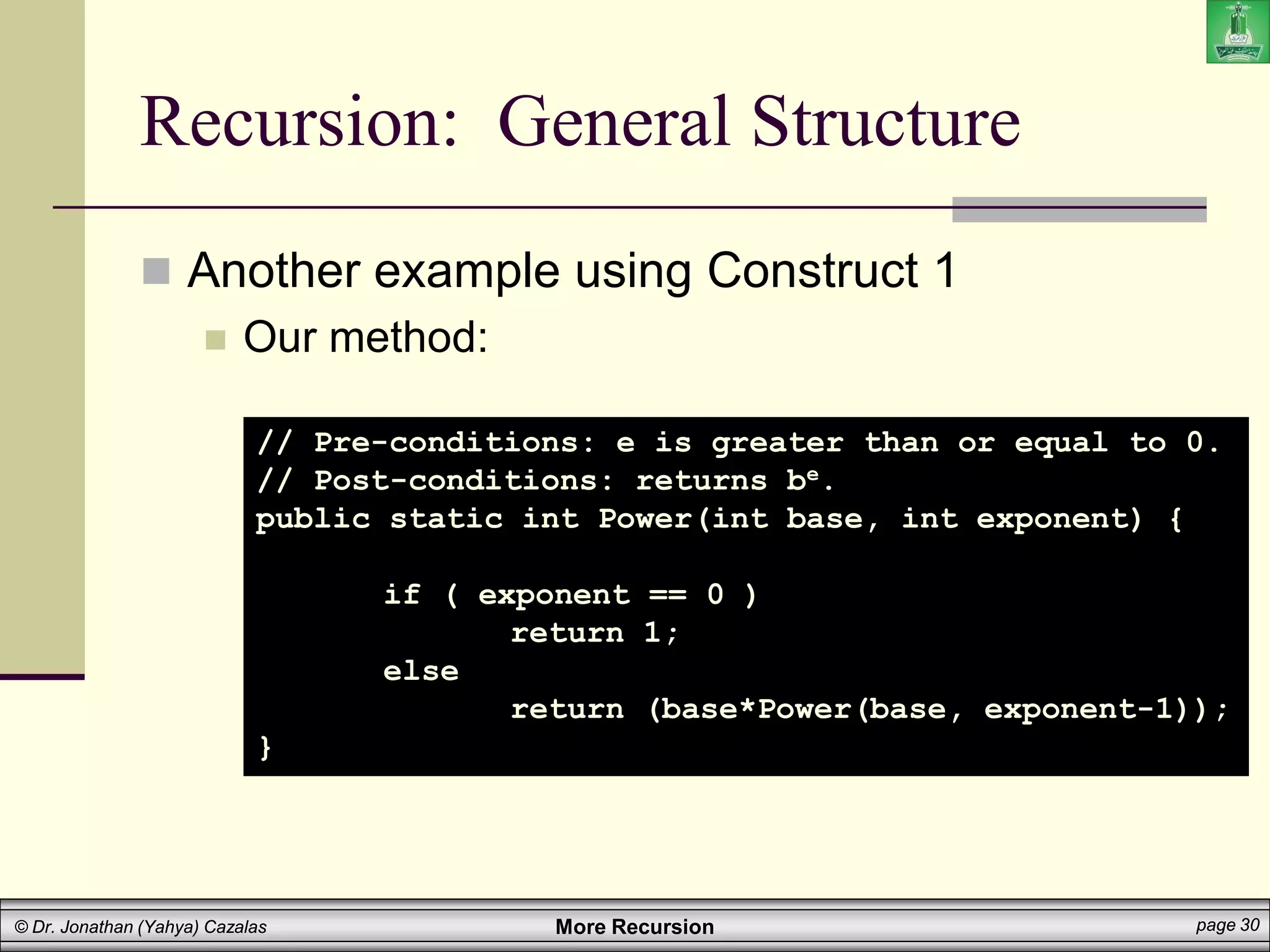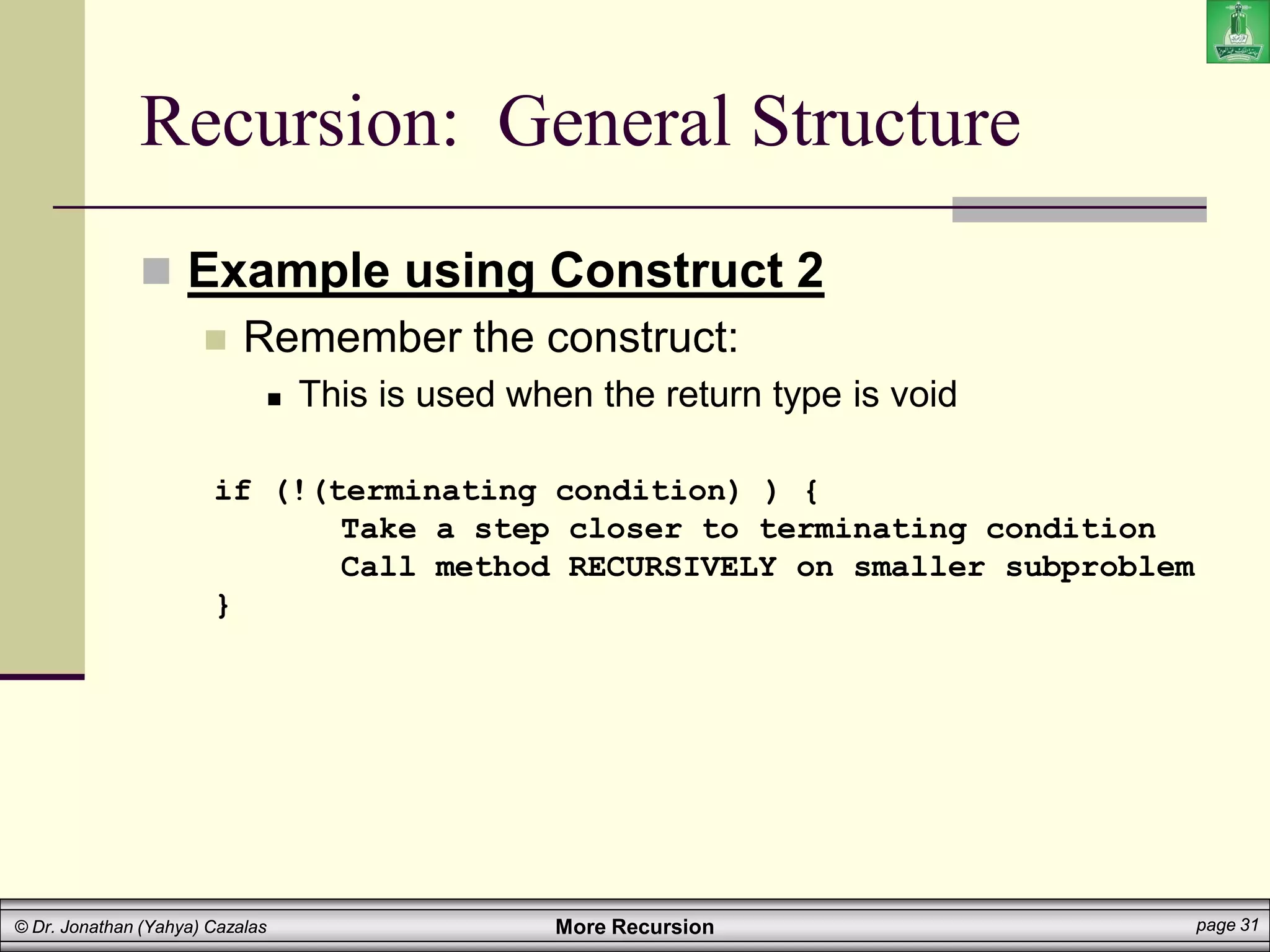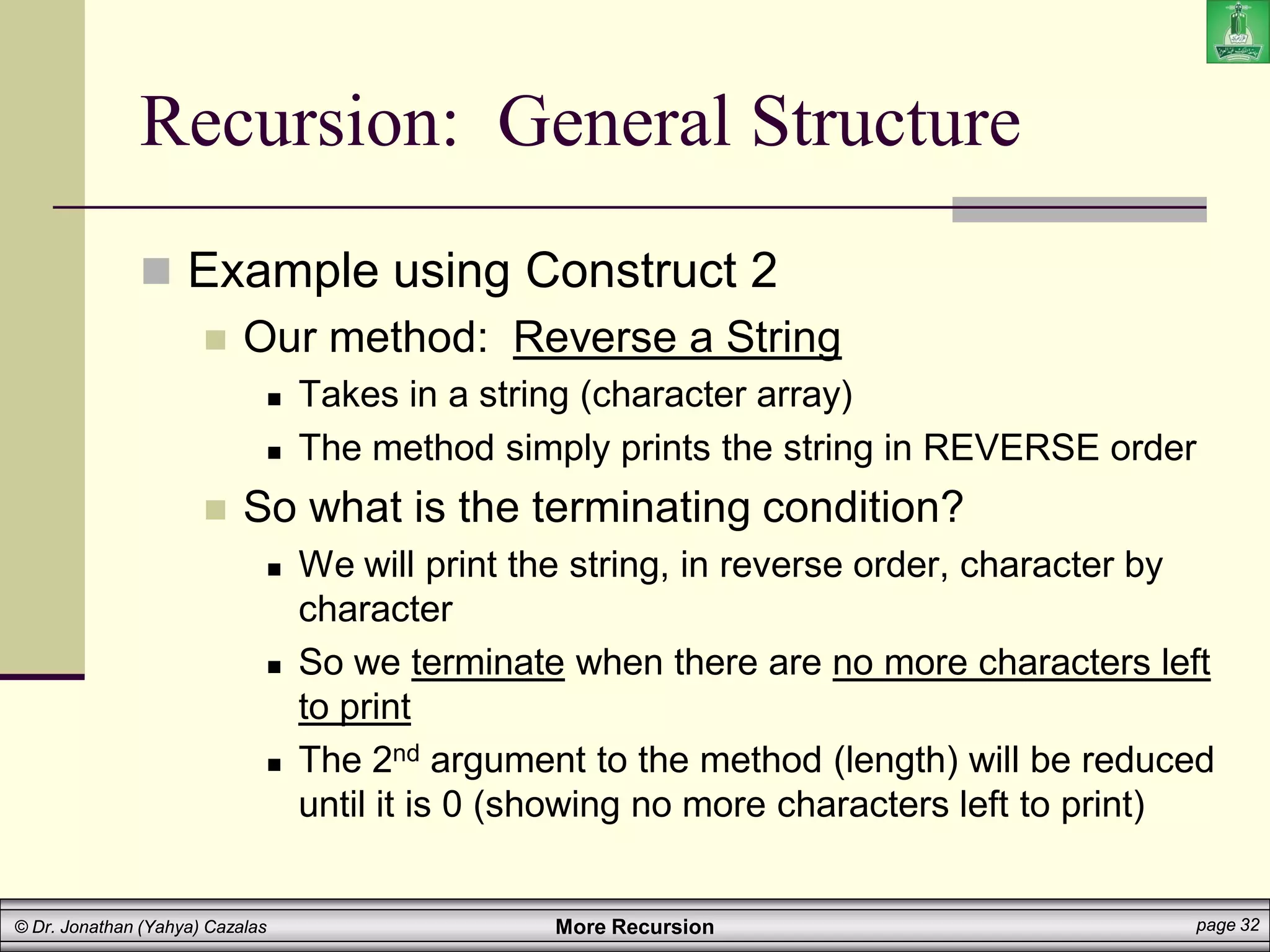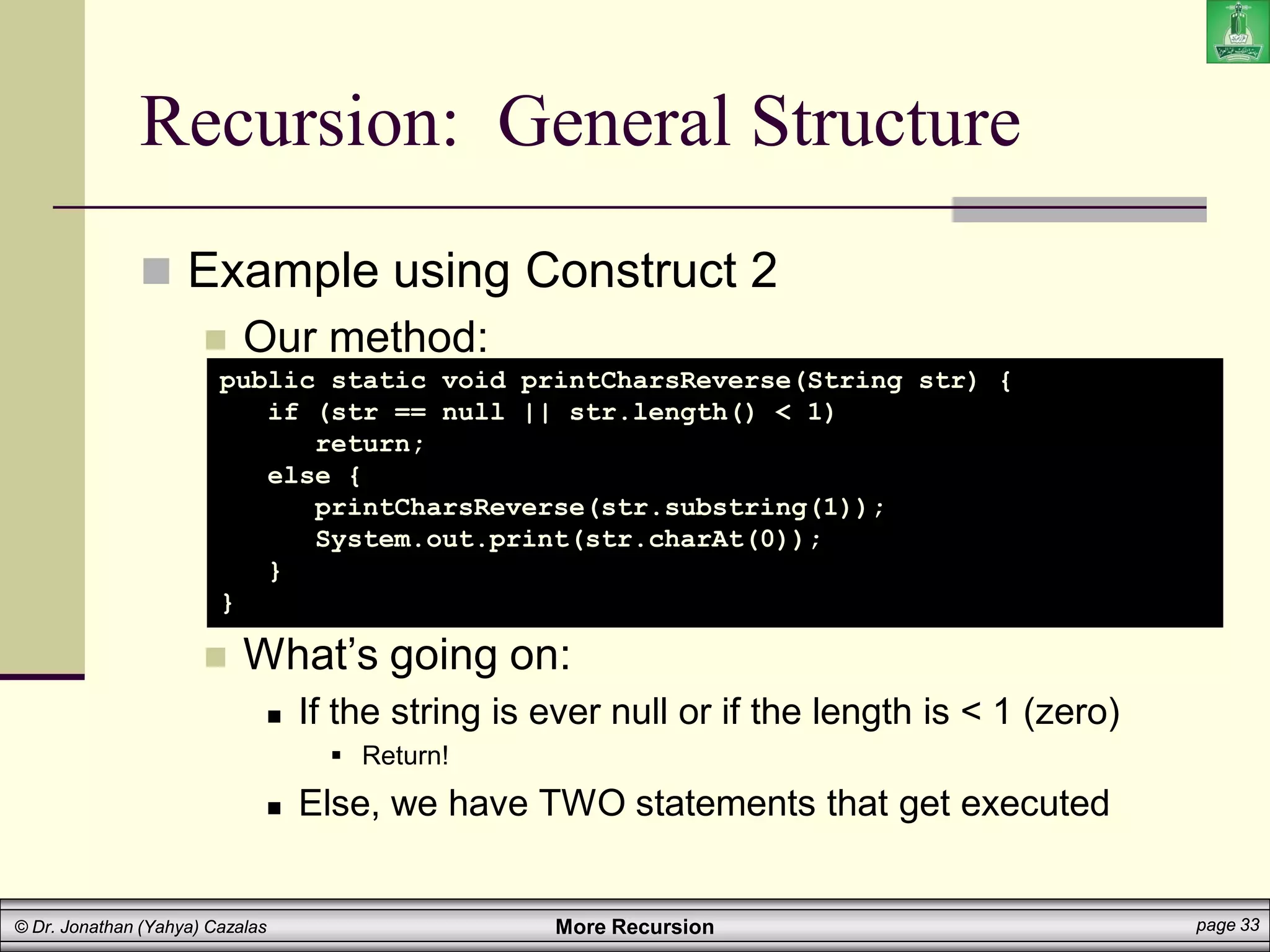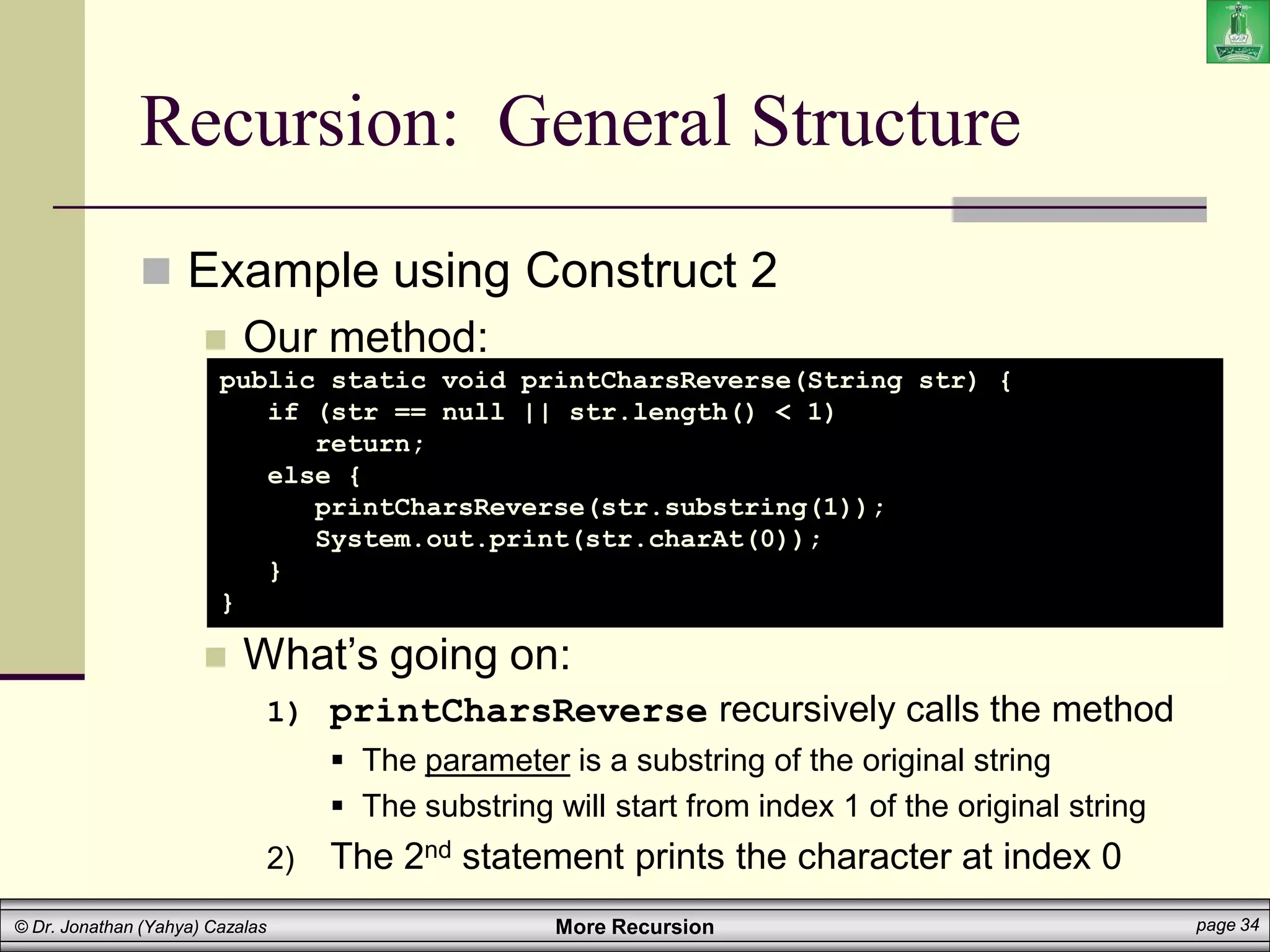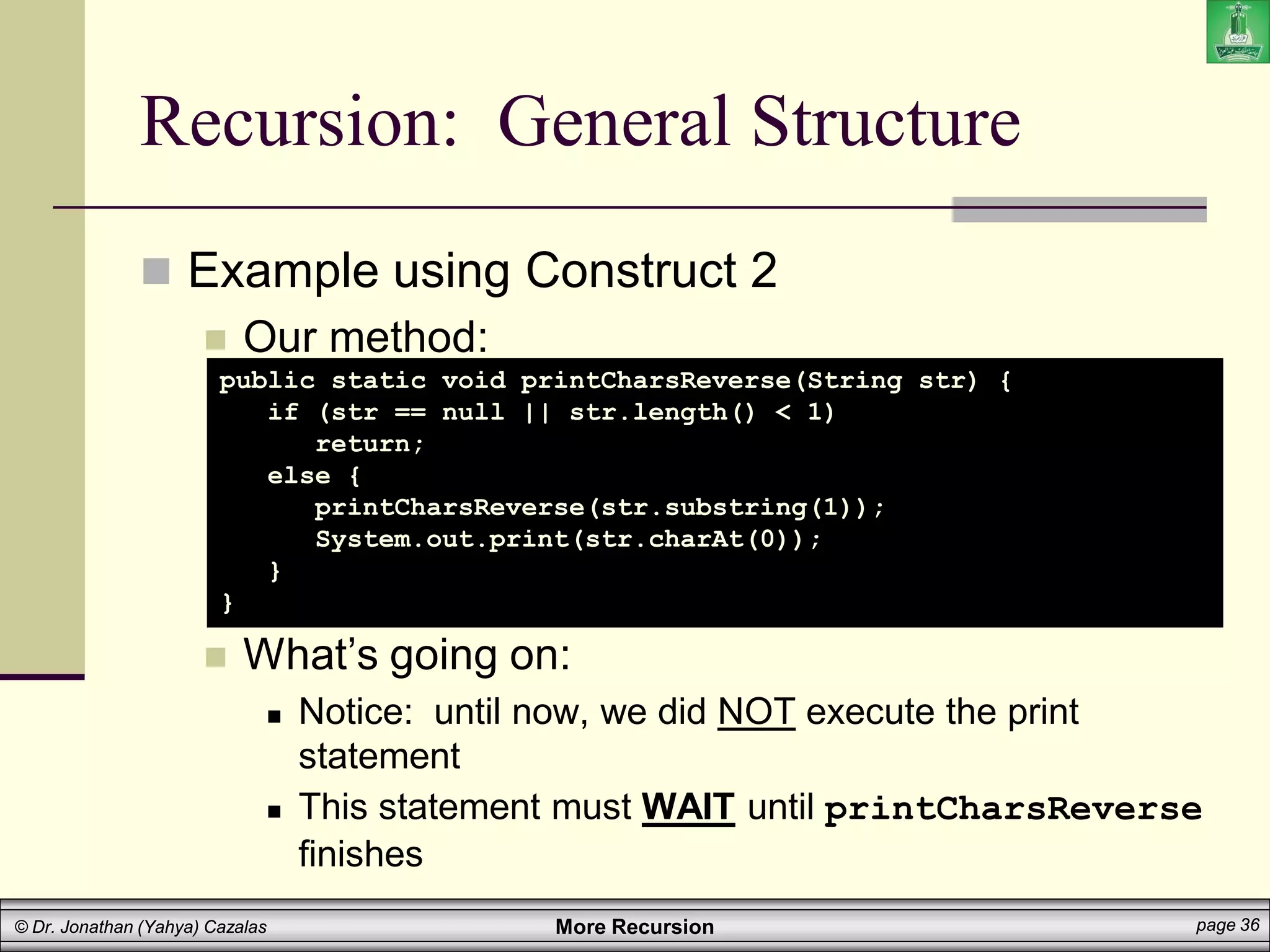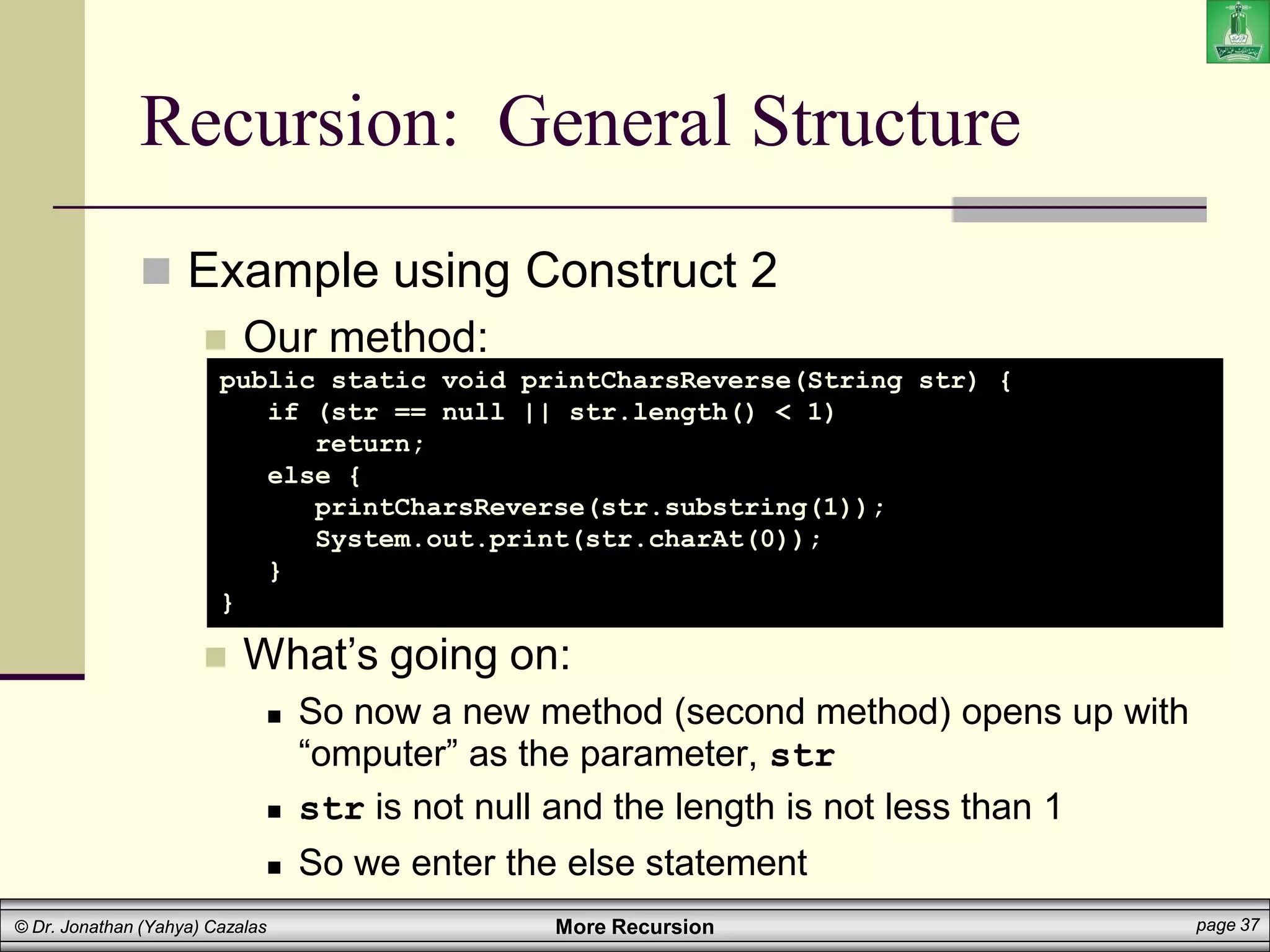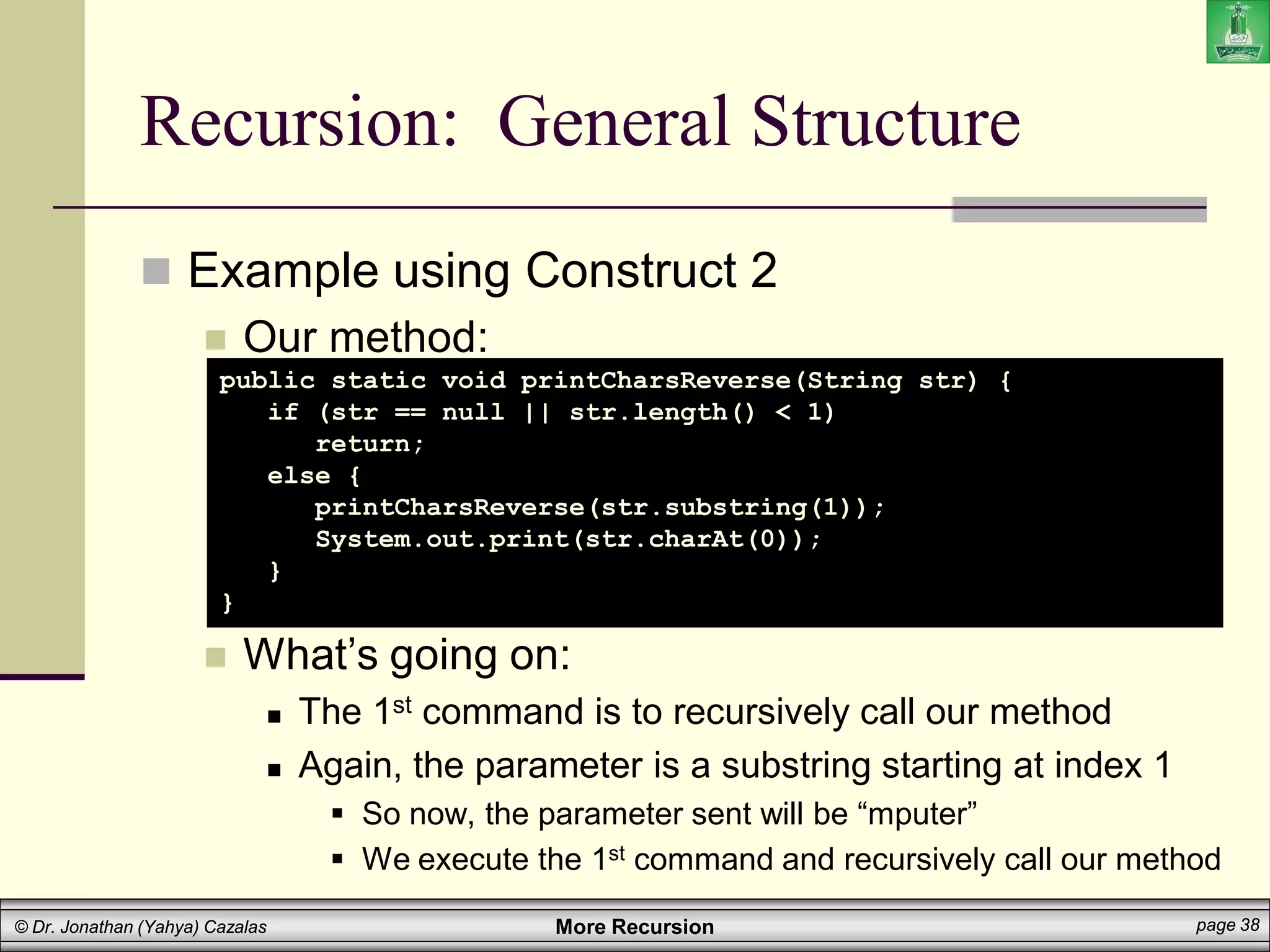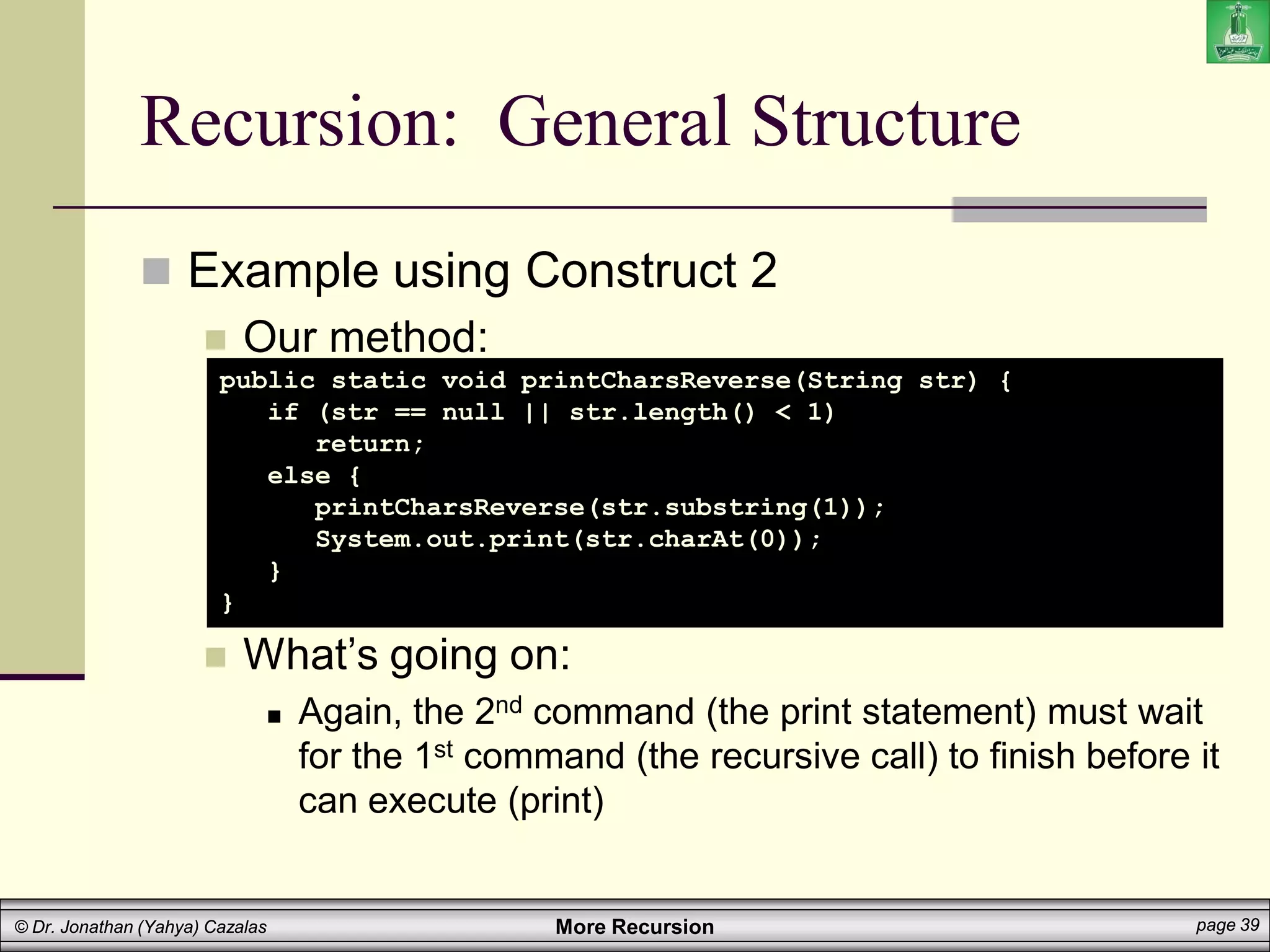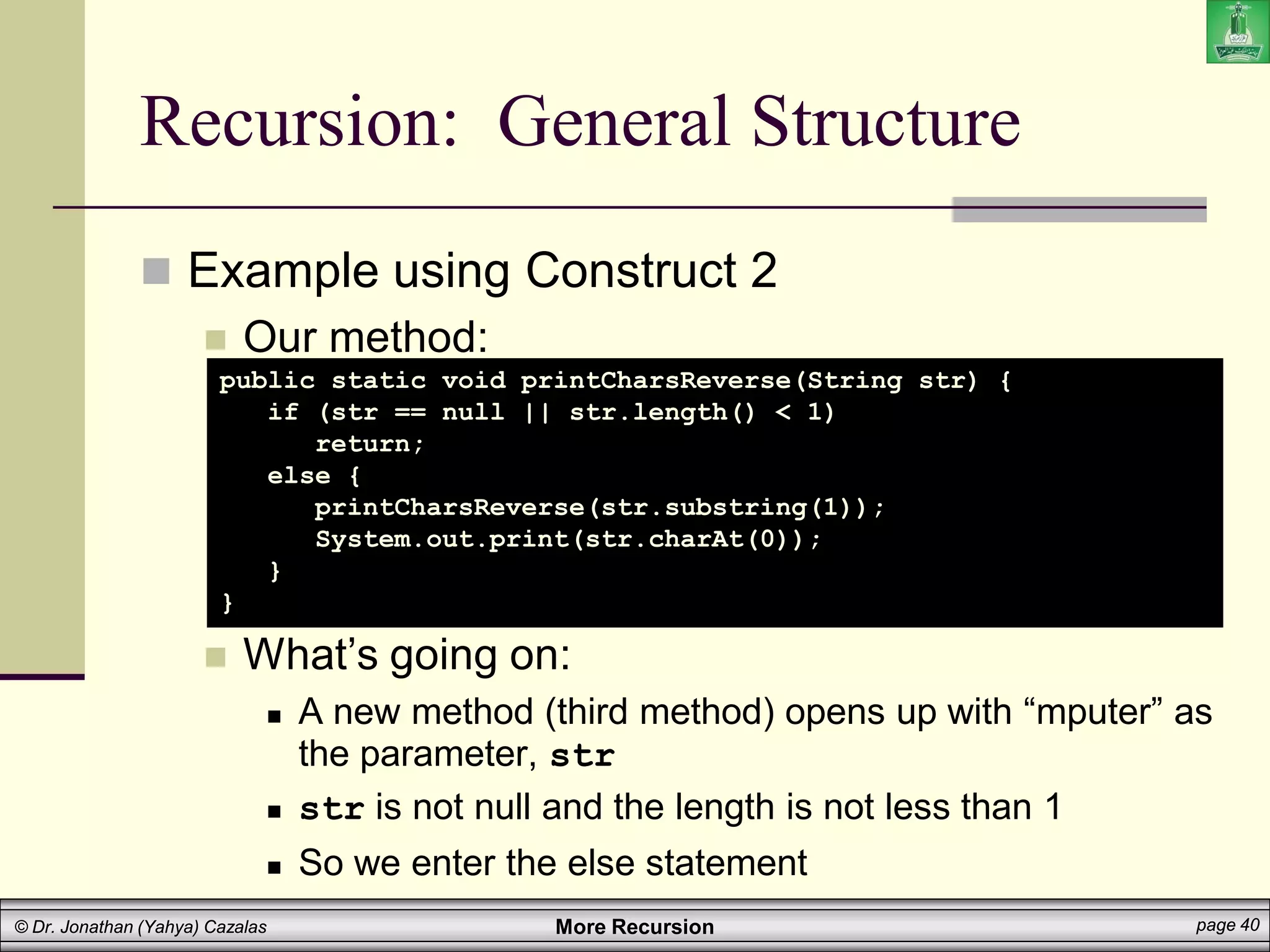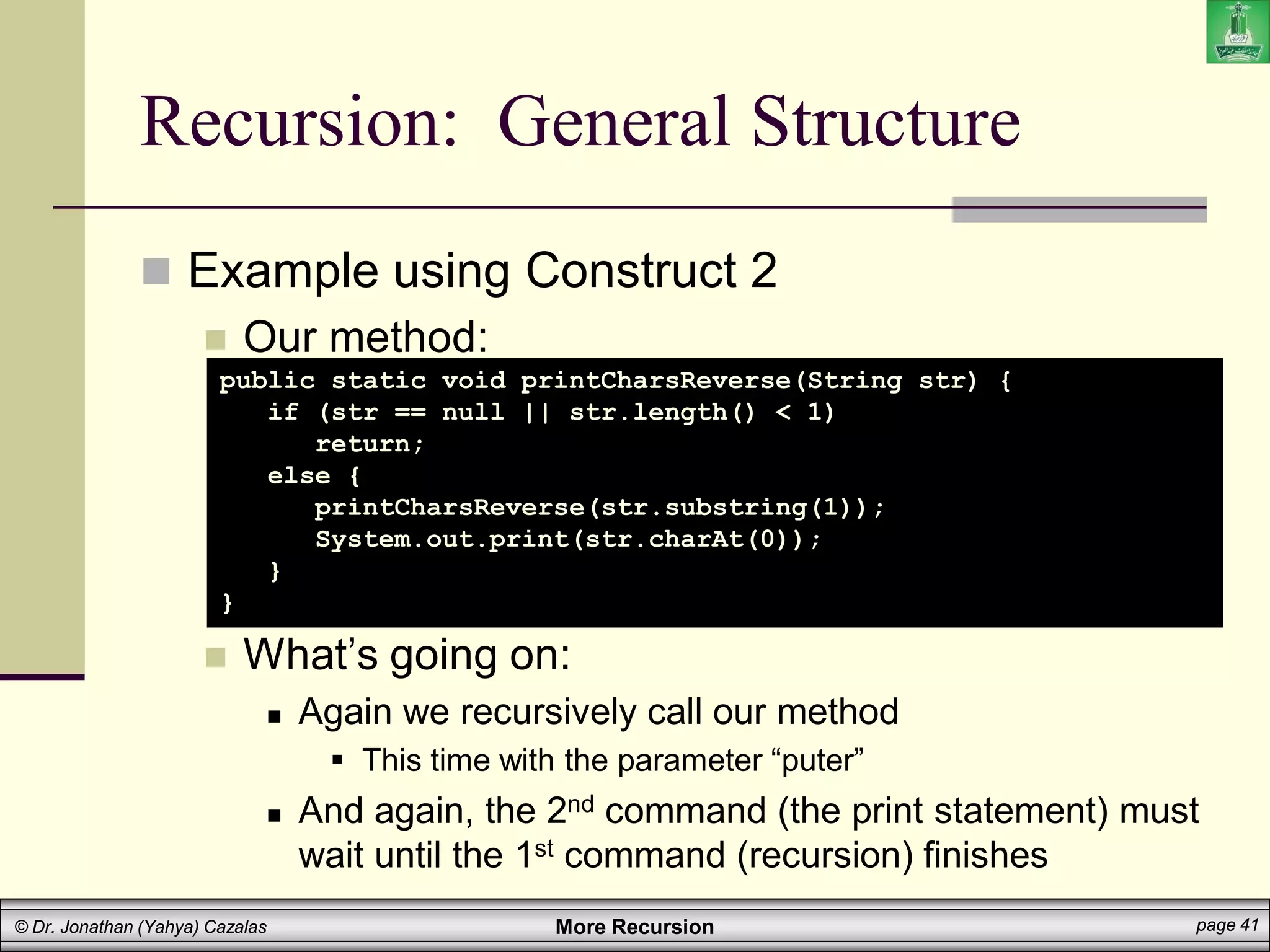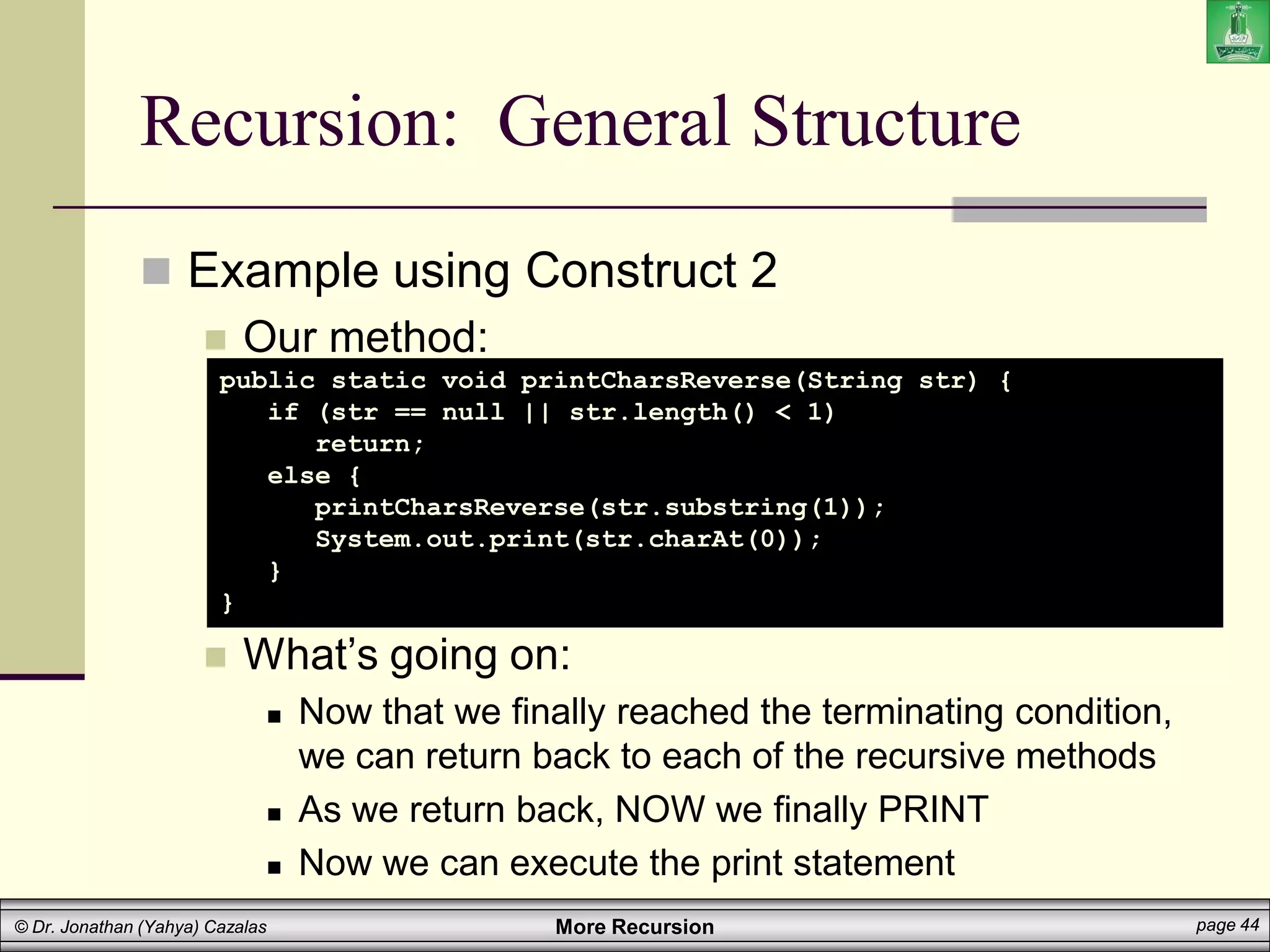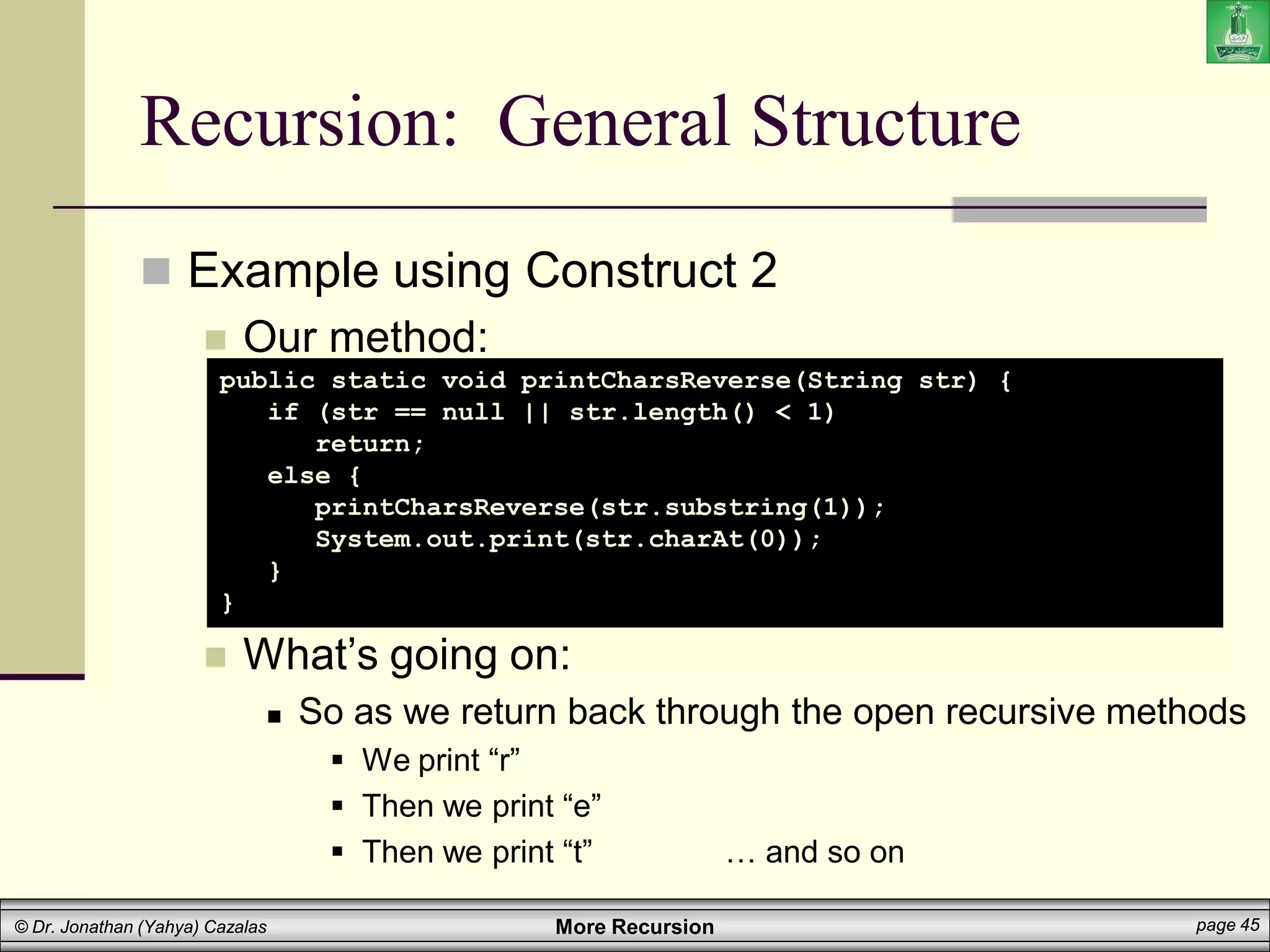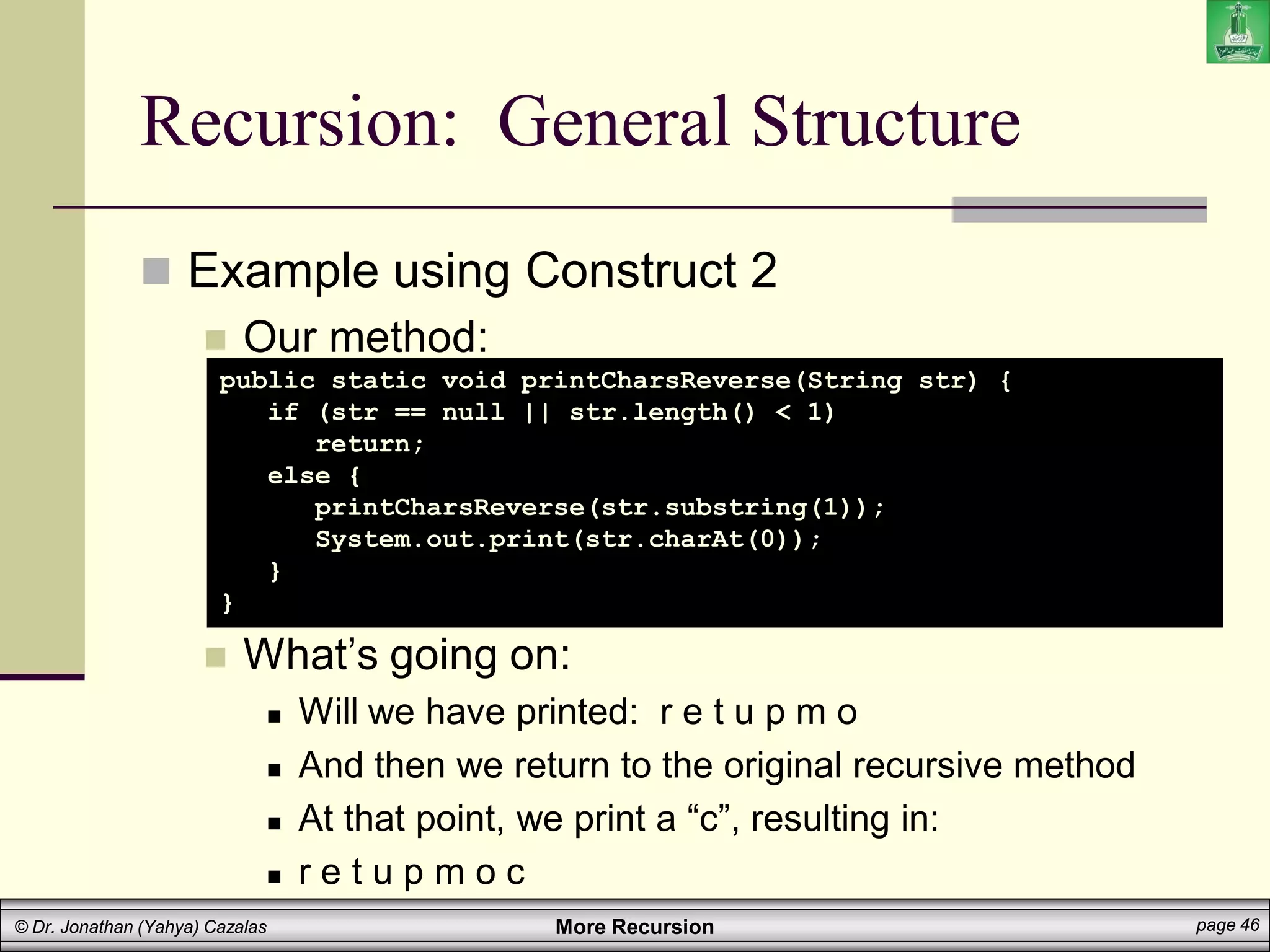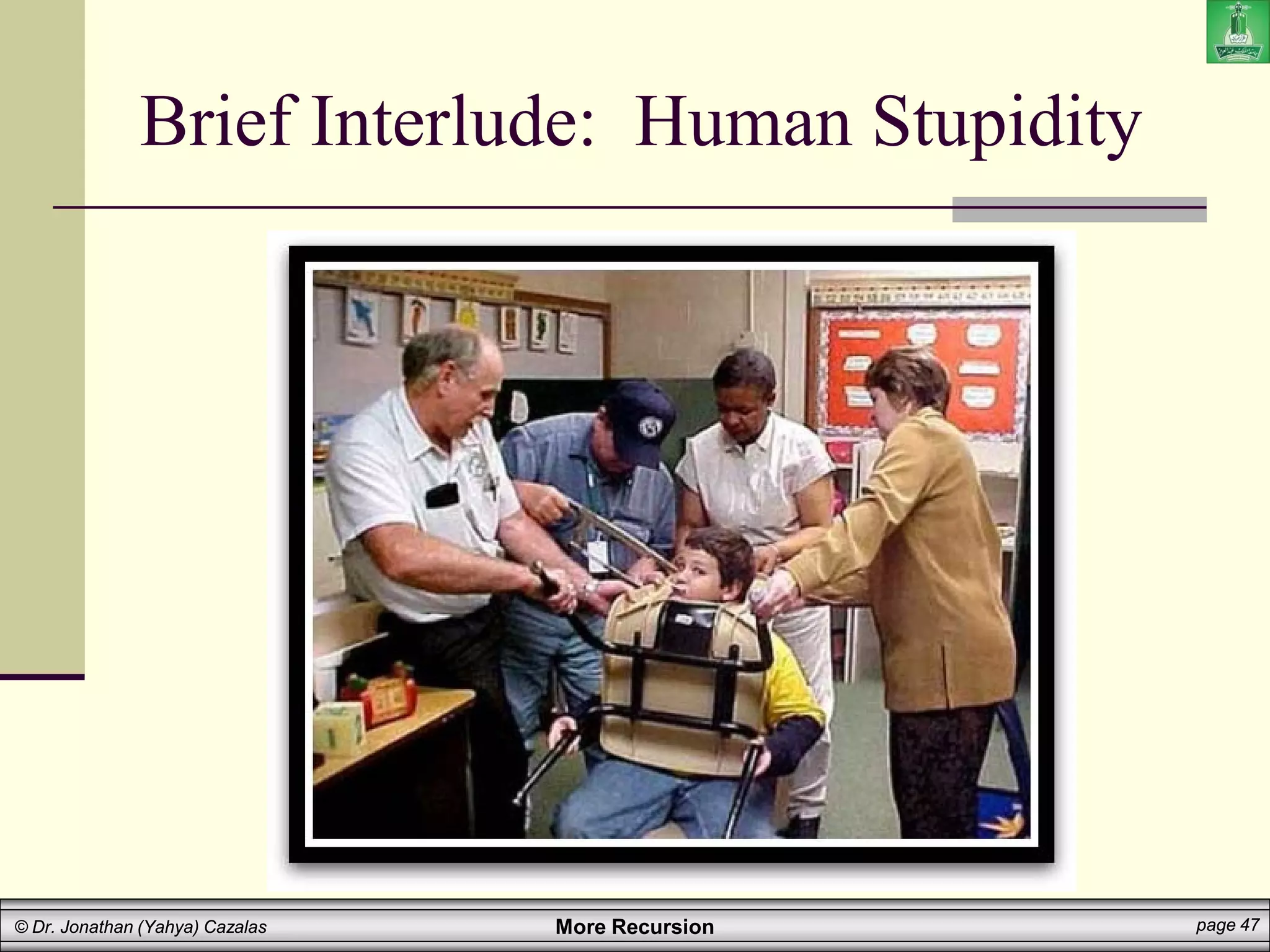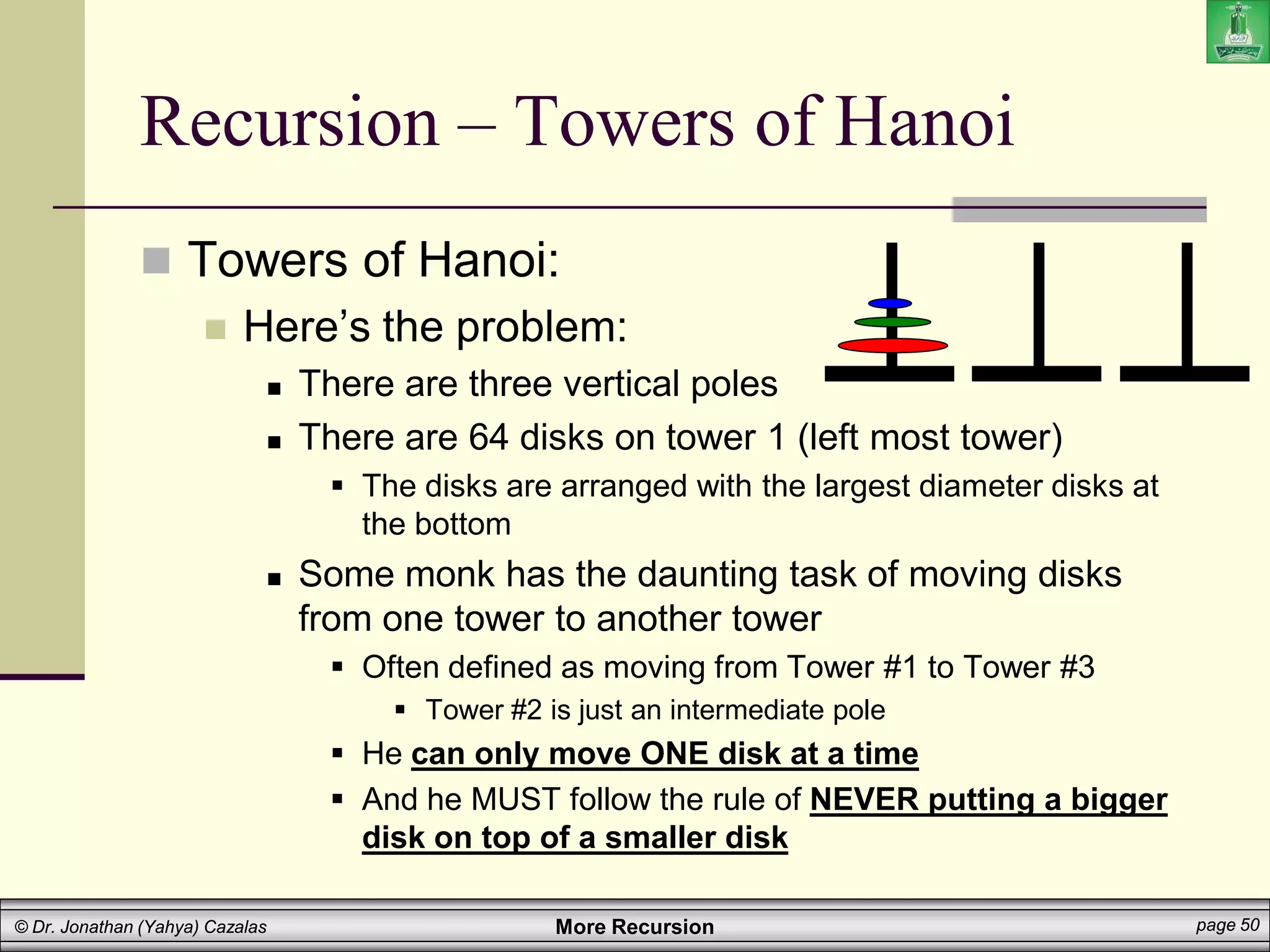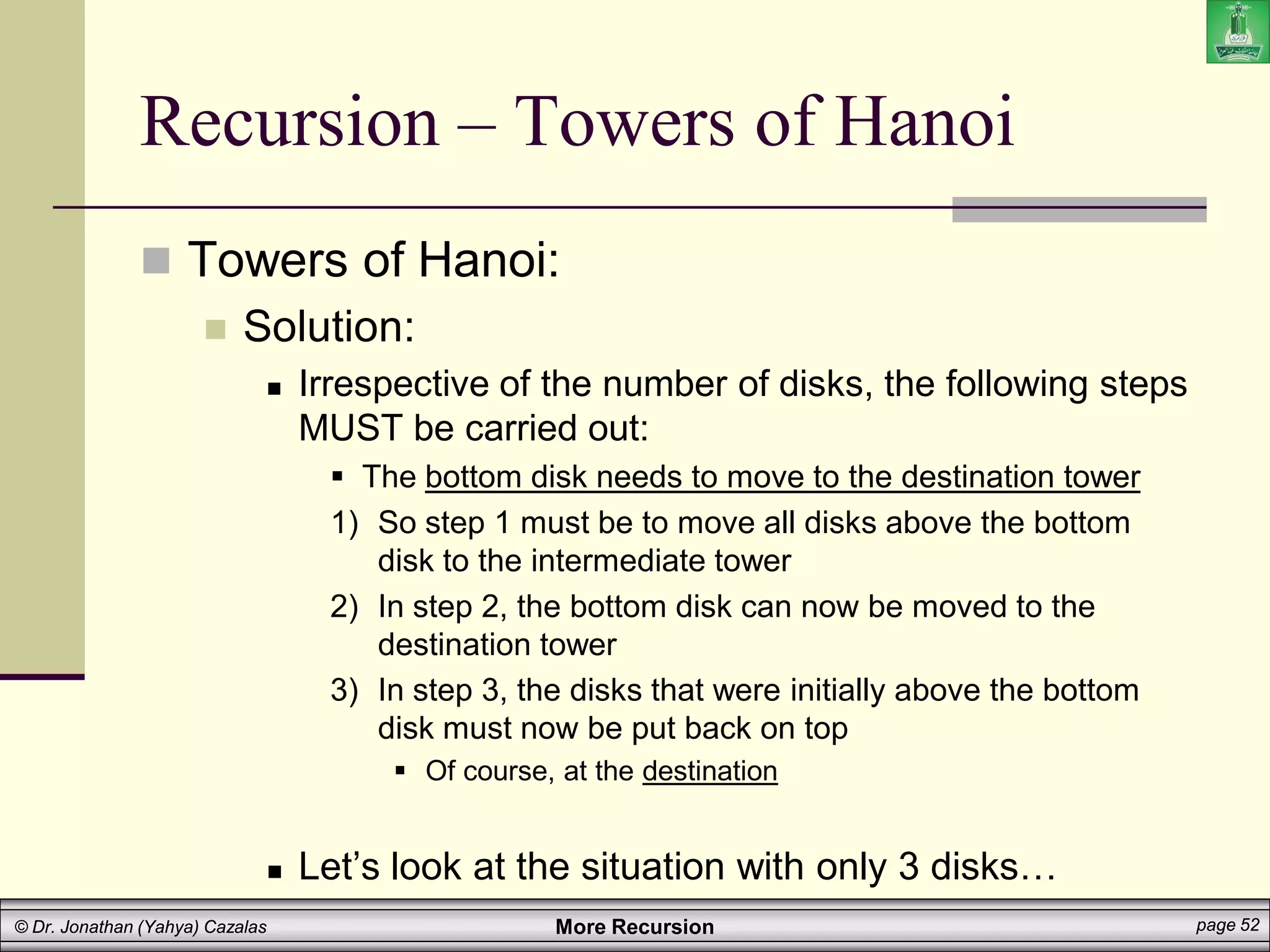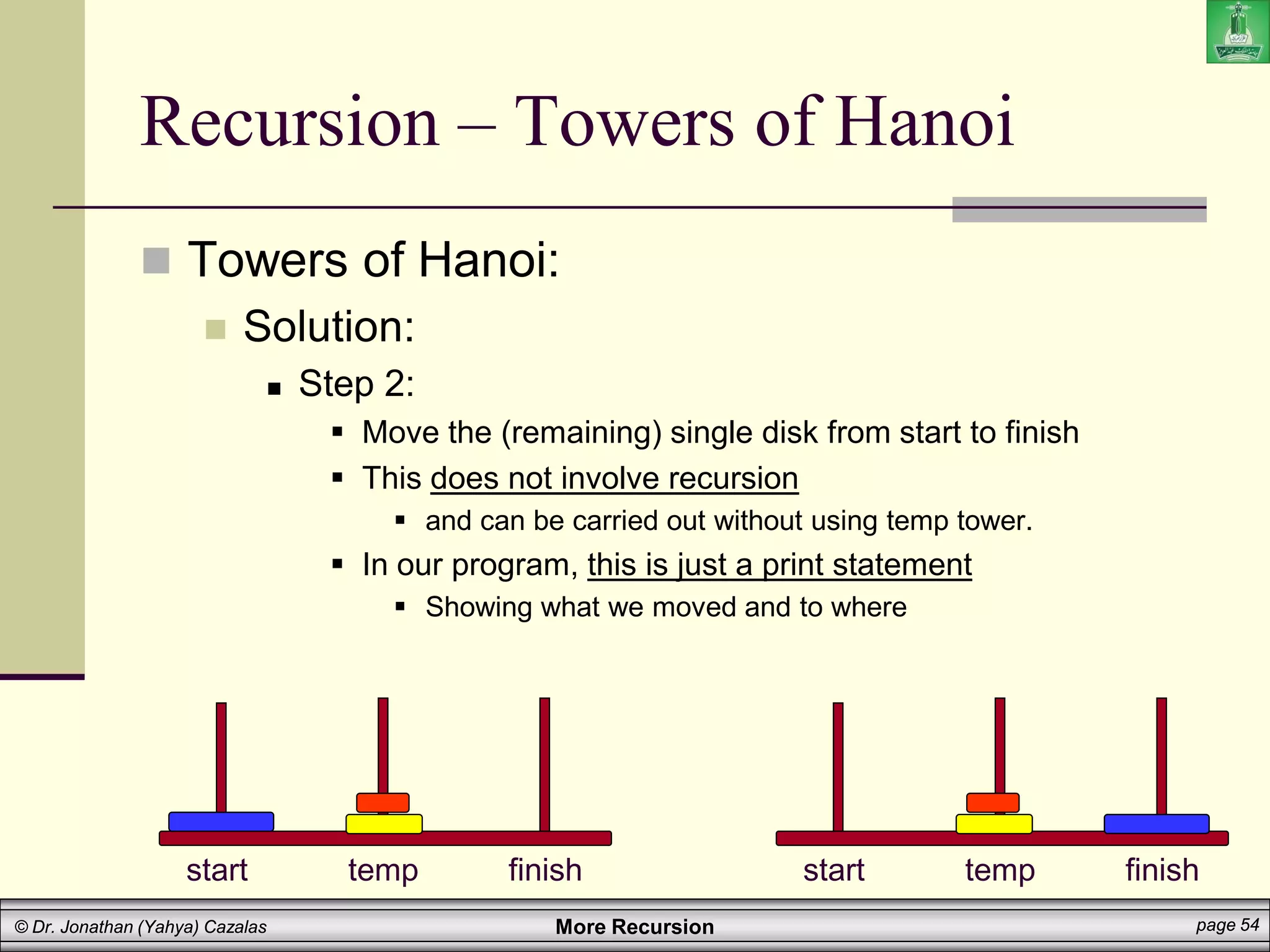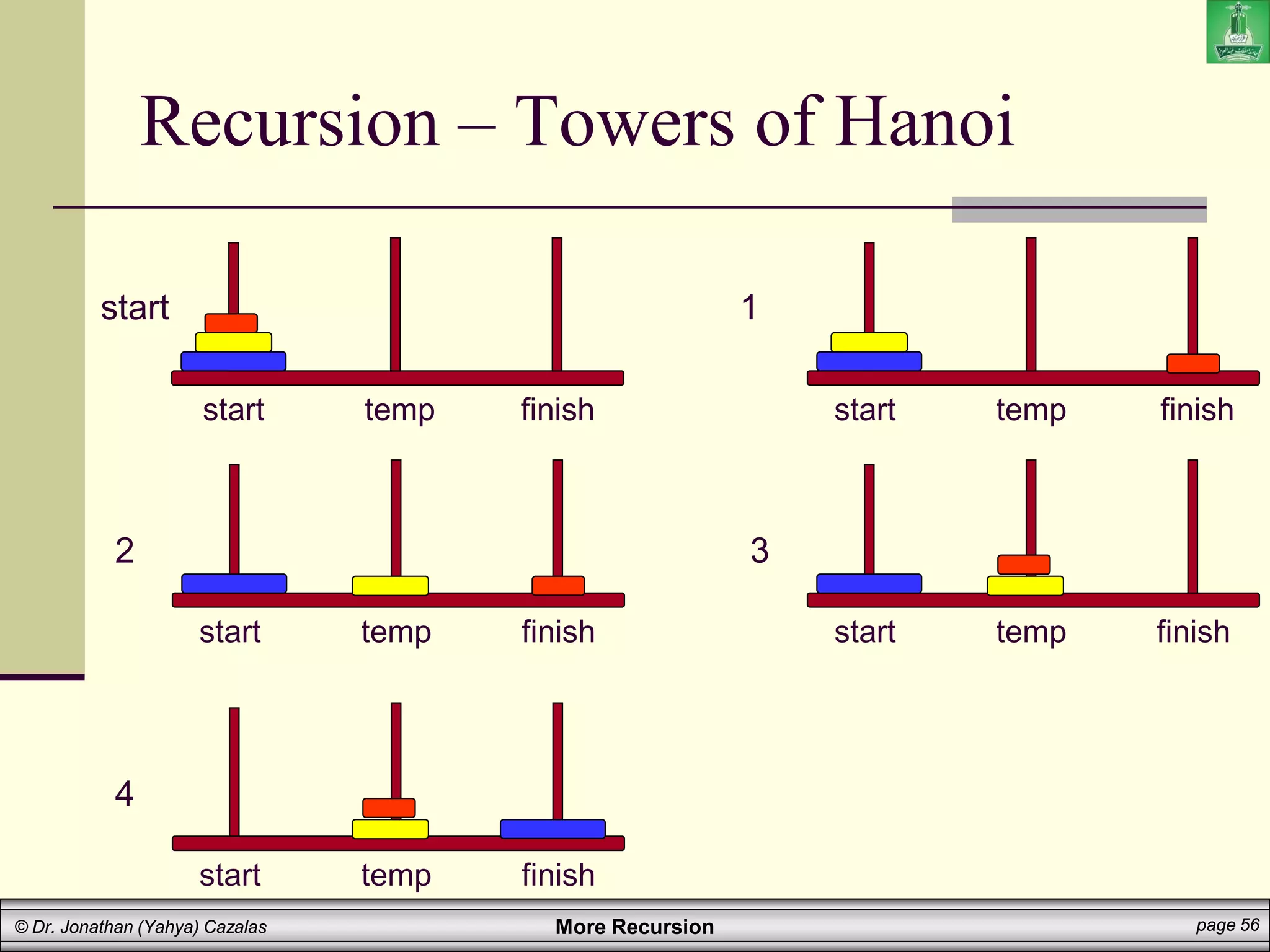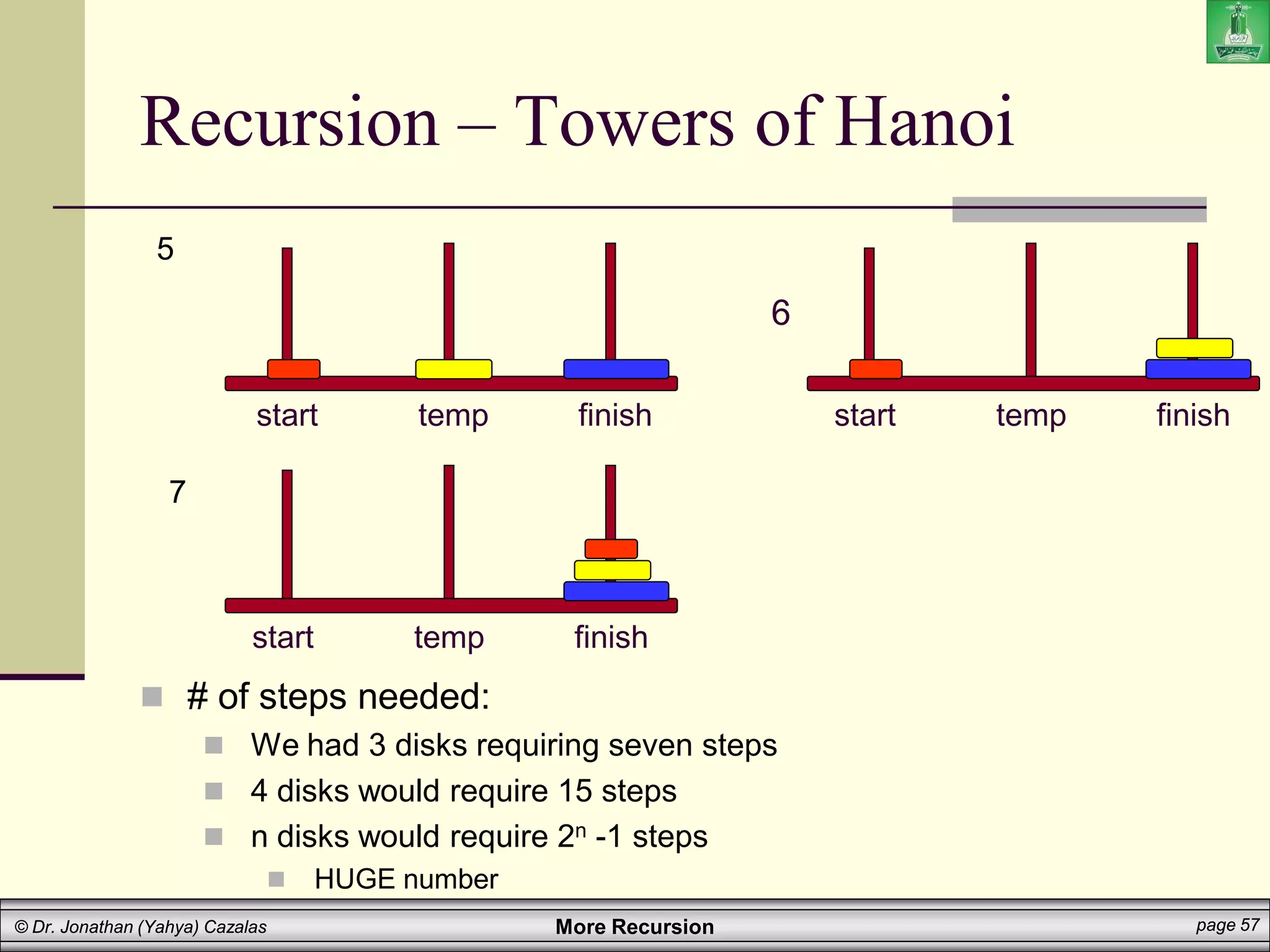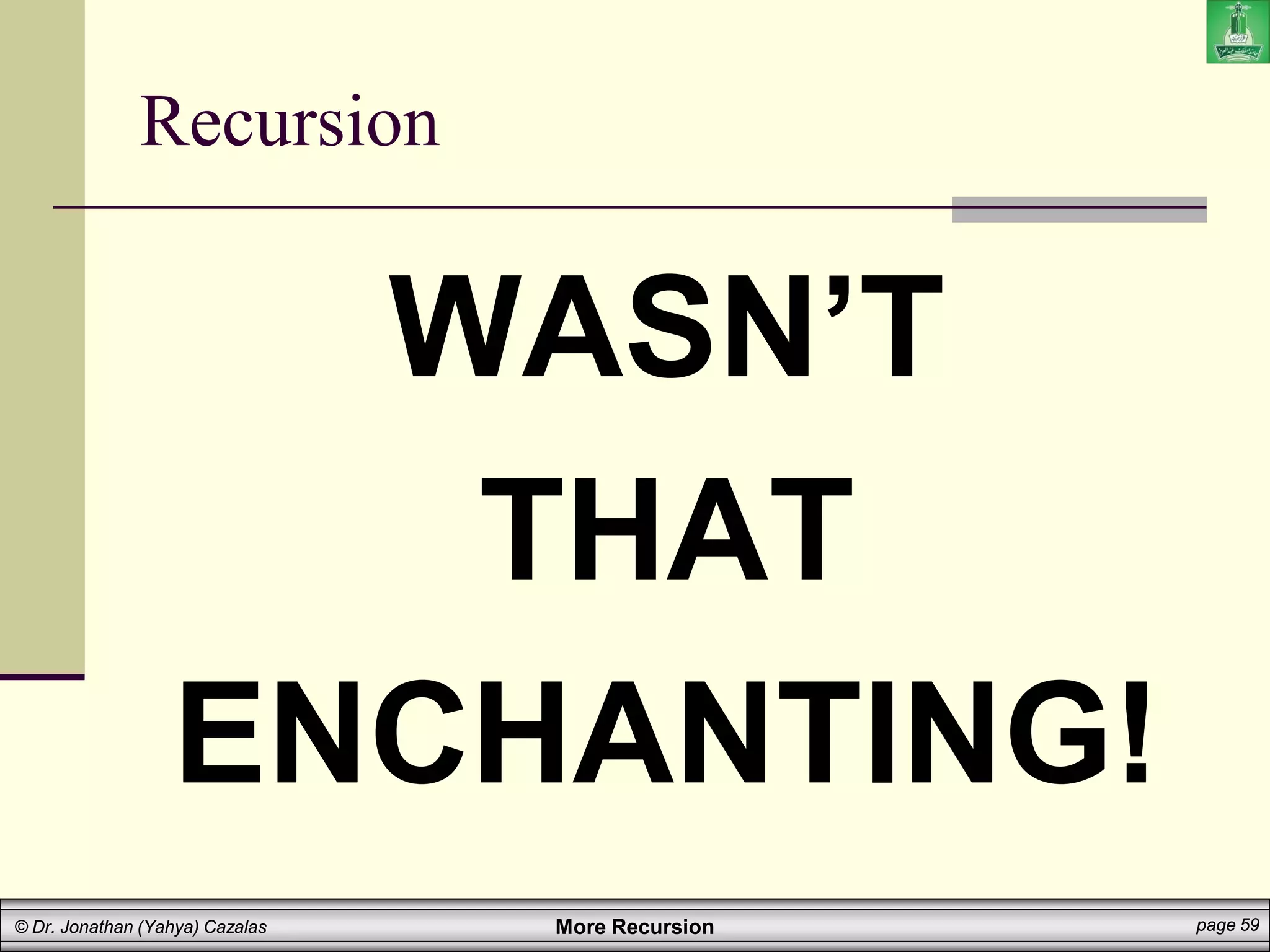The document covers the concept of recursion in programming, defining it as a method that invokes itself to solve large problems by breaking them down into smaller, simpler problems. It explains how recursion is used to compute the factorial of a number and provides examples of recursive functions, including sum calculations and exponentiation. Additionally, it outlines the general structure of recursive methods, including terminating conditions and how to approach recursive problem-solving.

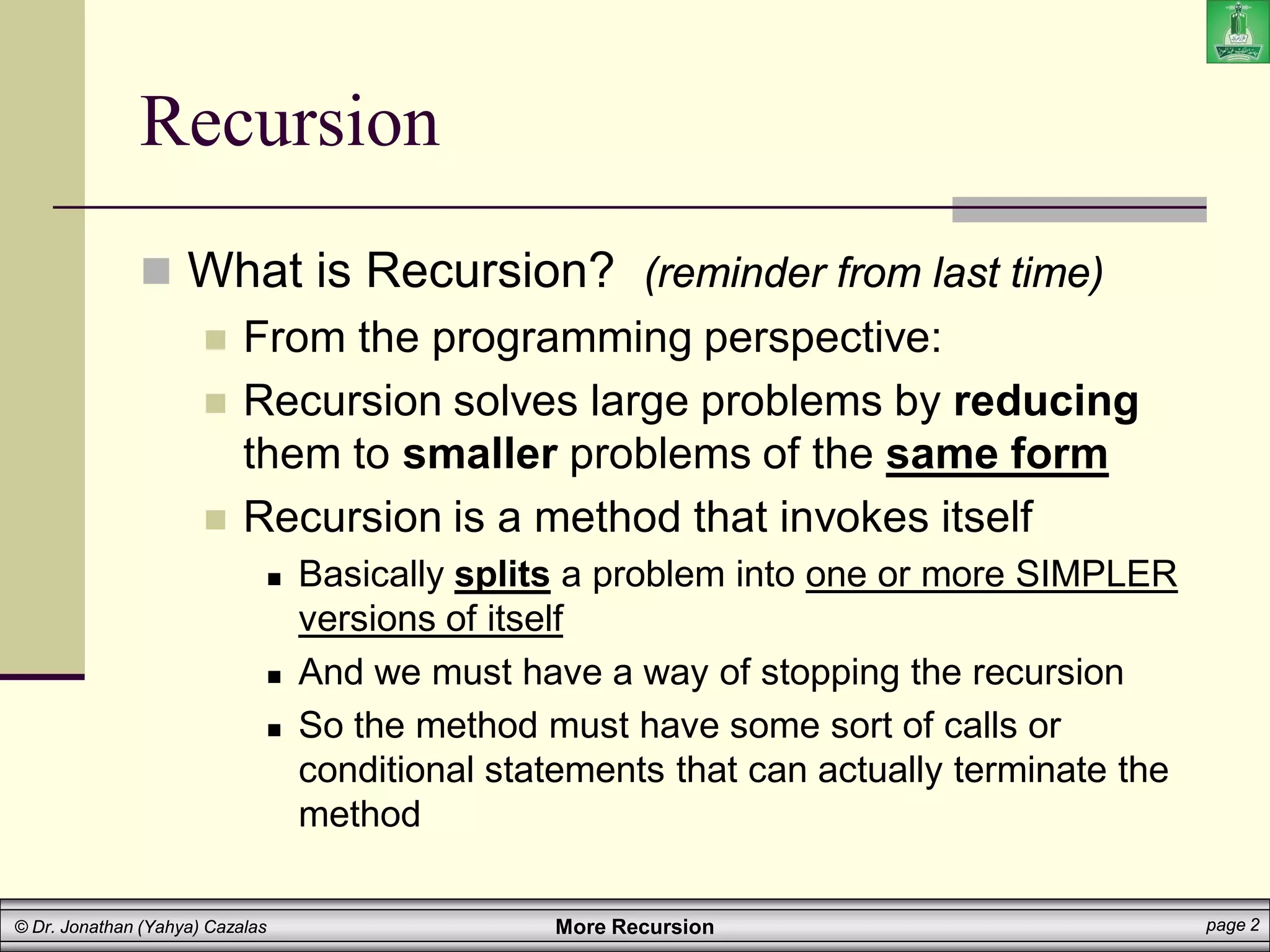
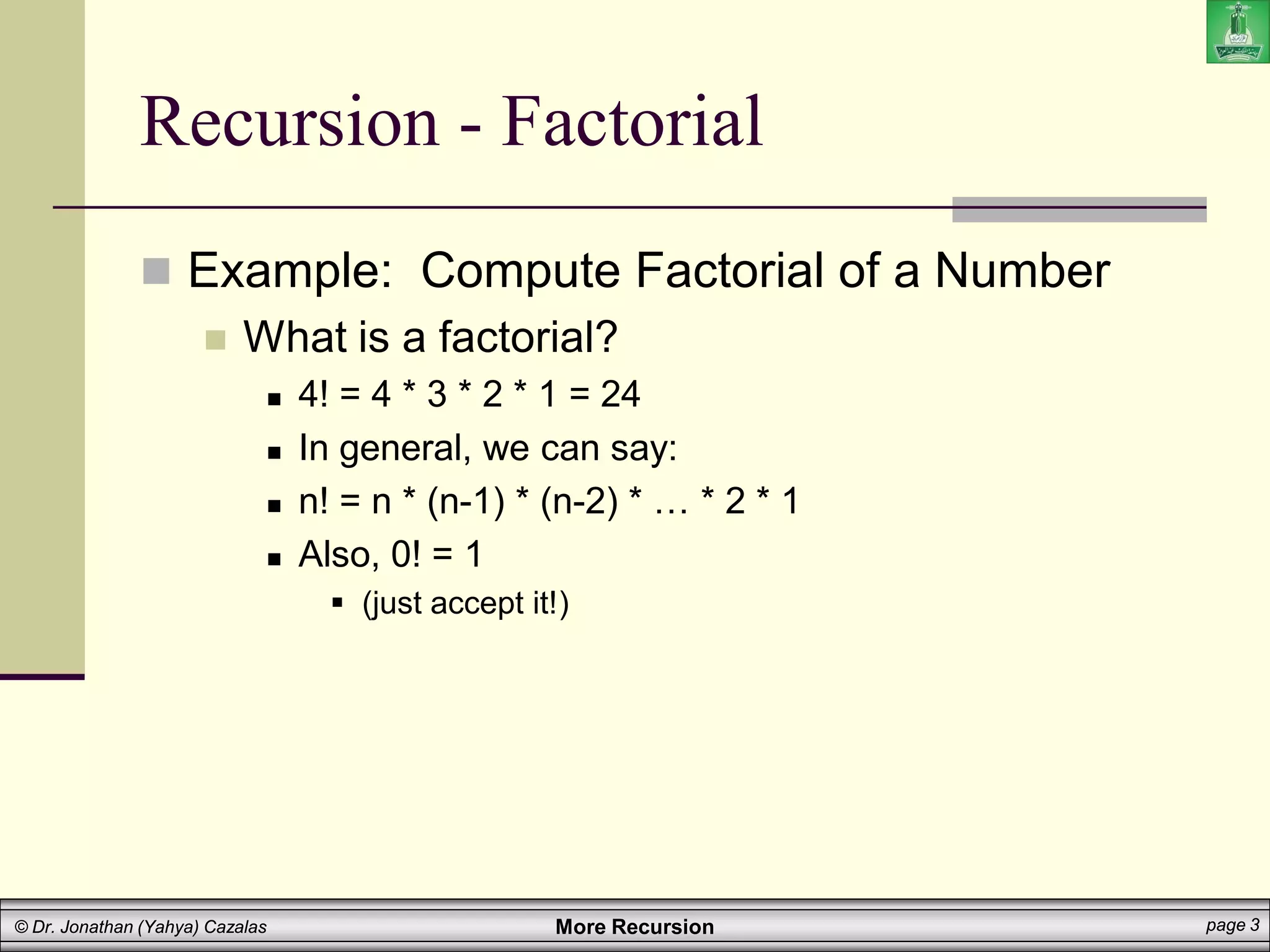
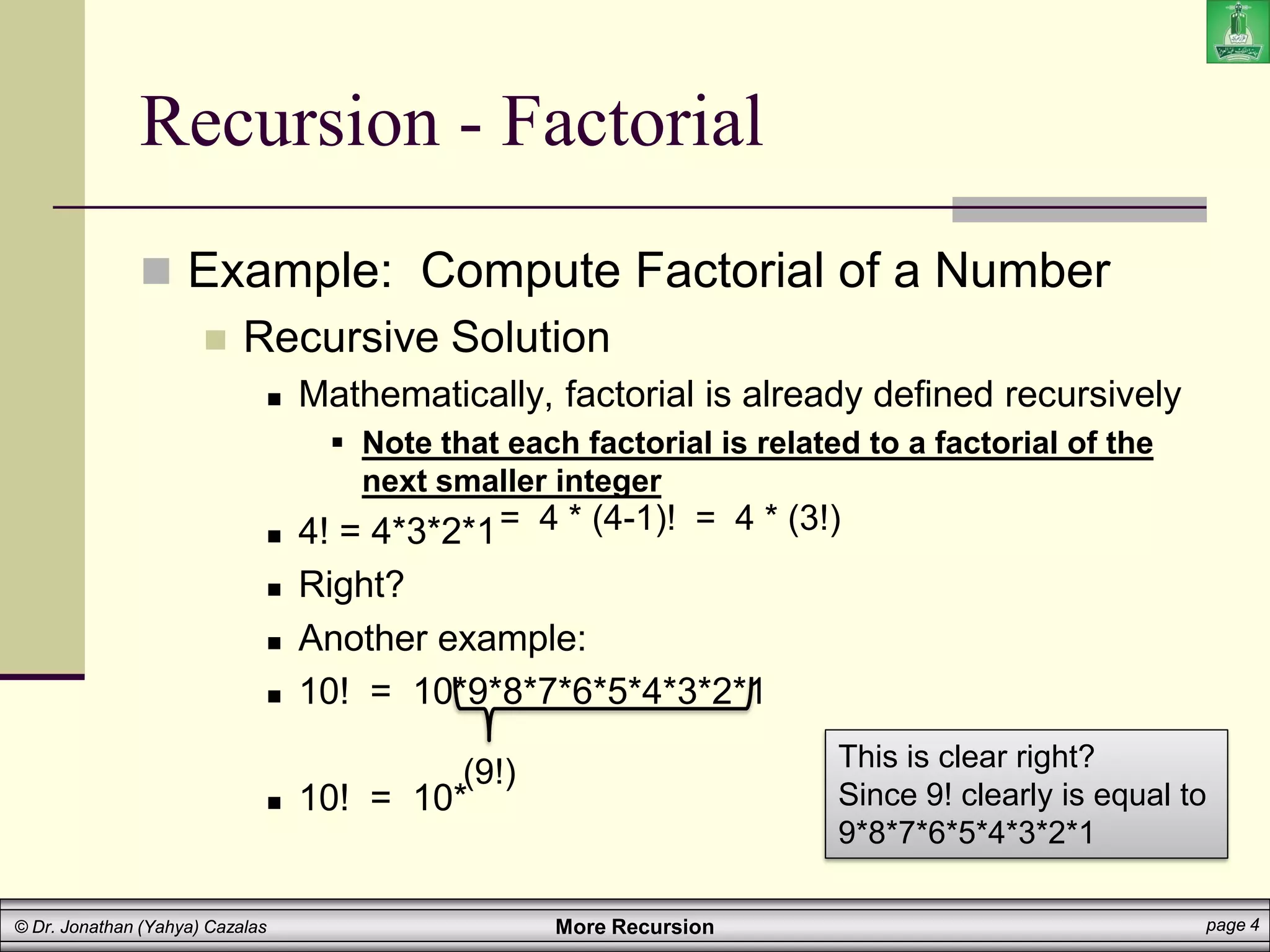
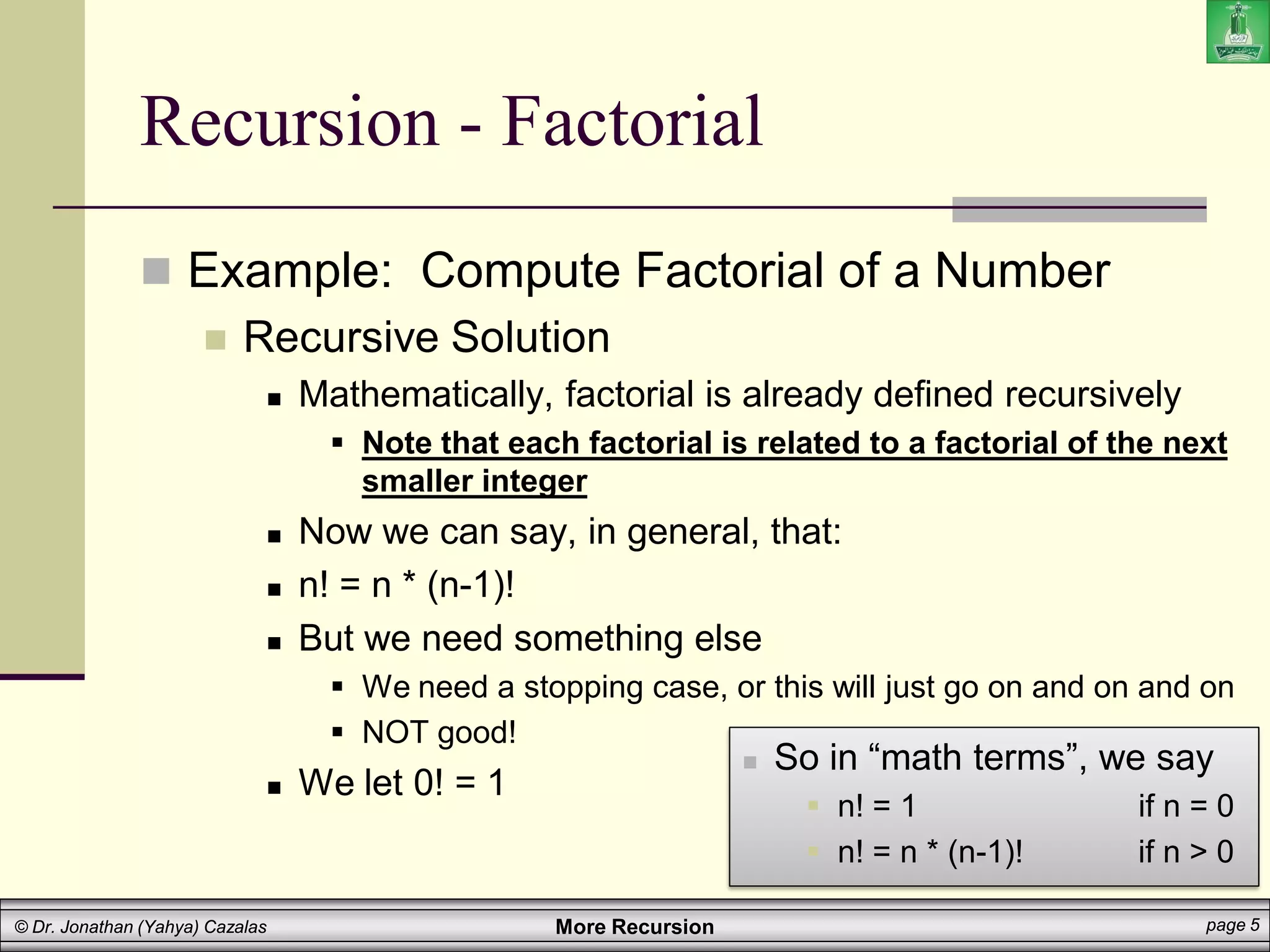
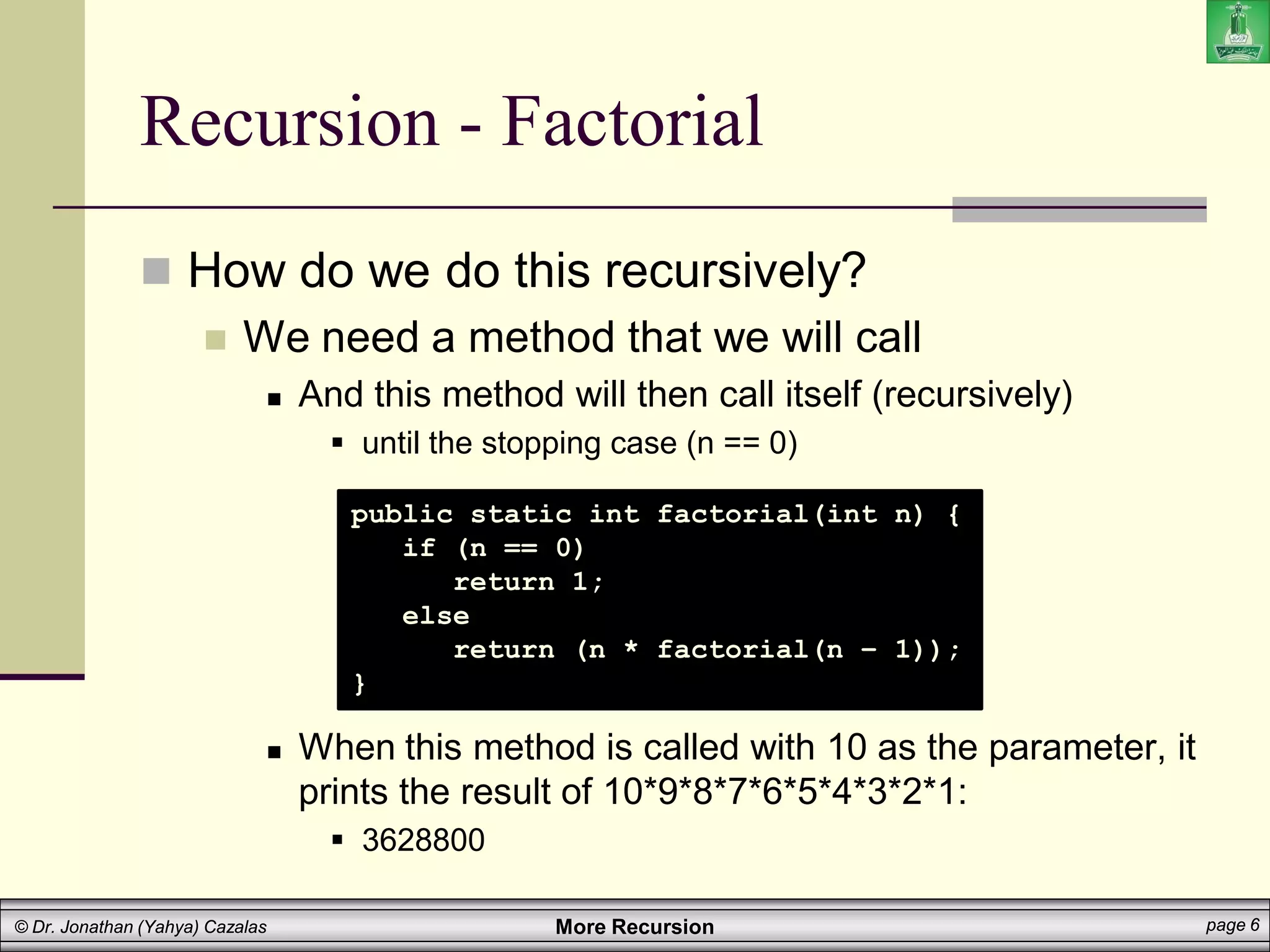
![More Recursion page 7
© Dr. Jonathan (Yahya) Cazalas
Recursion - Factorial
Here’s what’s going on…in pictures
public static void main(String[] args) {
int F = factorial(10);
System.out.println(F);
}
factorial(10)
Returns (10*factorial(9))
factorial(9)
Returns (9*factorial(8))
factorial(8)
Returns (8*factorial(7))
factorial(7)
Returns (7*factorial(6))
factorial(6)
Returns (6*factorial(5))
factorial(5)
Returns (5*factorial(4))
factorial(4)
Returns (4*factorial(3))
factorial(3)
Returns (3*factorial(2))
factorial(2)
Returns (2*factorial(1))
factorial(1)
Returns (1*factorial(0))
factorial(0)
Returns 1](https://image.slidesharecdn.com/cpcs20410recursion2-210408140606/75/recursion2-7-2048.jpg)
![More Recursion page 8
© Dr. Jonathan (Yahya) Cazalas
Recursion - Factorial
Here’s what’s going on…in pictures
So now when we return,
Where do we return to?
We return to the method that called factorial(0)
We return the value, 1, into the spot that called factorial(0)
factorial(10)
Returns (10*factorial(9))
factorial(9)
Returns (9*factorial(8))
factorial(8)
Returns (8*factorial(7))
factorial(7)
Returns (7*factorial(6))
factorial(6)
Returns (6*factorial(5))
factorial(5)
Returns (5*factorial(4))
factorial(4)
Returns (4*factorial(3))
factorial(3)
Returns (3*factorial(2))
factorial(2)
Returns (2*factorial(1))
factorial(1)
Returns (1*factorial(0))
factorial(0)
Returns 1
public static void main(String[] args) {
int F = factorial(10);
System.out.println(F);
}](https://image.slidesharecdn.com/cpcs20410recursion2-210408140606/75/recursion2-8-2048.jpg)
![More Recursion page 9
© Dr. Jonathan (Yahya) Cazalas
public static void main(String[] args) {
int F = factorial(10);
System.out.println(F);
}
Recursion - Factorial
Here’s what’s going on…in pictures
Now factorial has the value 3,628,800.
factorial(10)
Returns (10*factorial(9))
factorial(9)
Returns (9*factorial(8))
factorial(8)
Returns (8*factorial(7))
factorial(7)
Returns (7*factorial(6))
factorial(6)
Returns (6*factorial(5))
factorial(5)
Returns (5*factorial(4))
factorial(4)
Returns (4*factorial(3))
factorial(3)
Returns (3*factorial(2))
factorial(2)
Returns (2*factorial(1))
factorial(1)
Returns (1*factorial(0))
factorial(0)
Returns 1
factorial(1)
Returns (1*1)
factorial(2)
Returns (2*1)
factorial(3)
Returns (3*2)
factorial(4)
Returns (4*6)
factorial(5)
Returns (5*24)
factorial(6)
Returns (6*120)
factorial(7)
Returns (7*720)
factorial(8)
Returns (8*5040)
factorial(9)
Returns (9*40320)
factorial(10)
Returns (10*362880)
1
1
2
6
24
120
720
5040
40320
362880
3628800](https://image.slidesharecdn.com/cpcs20410recursion2-210408140606/75/recursion2-9-2048.jpg)
